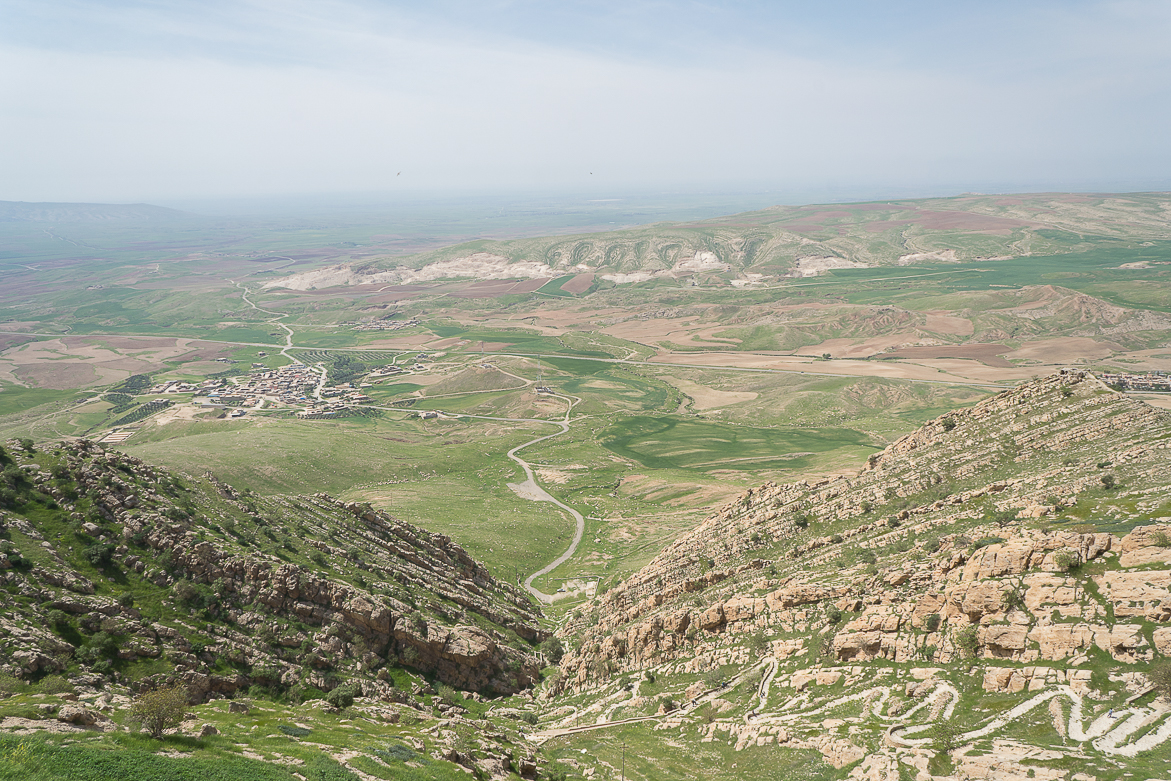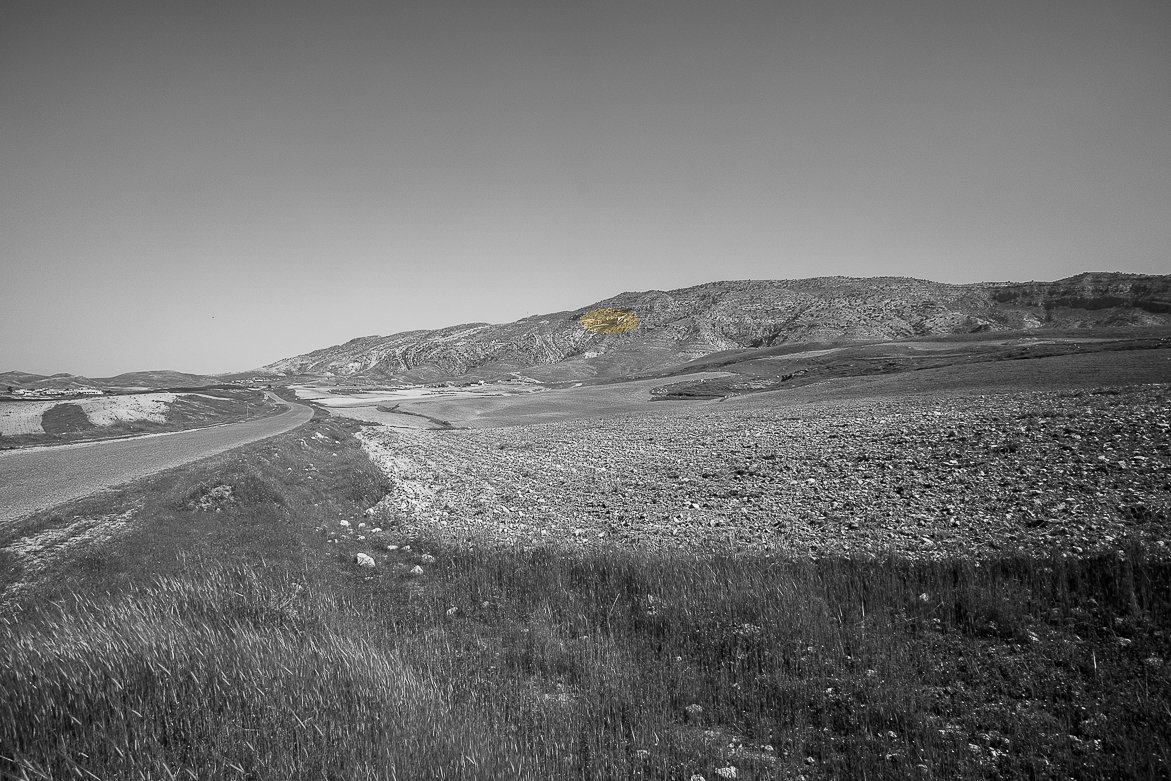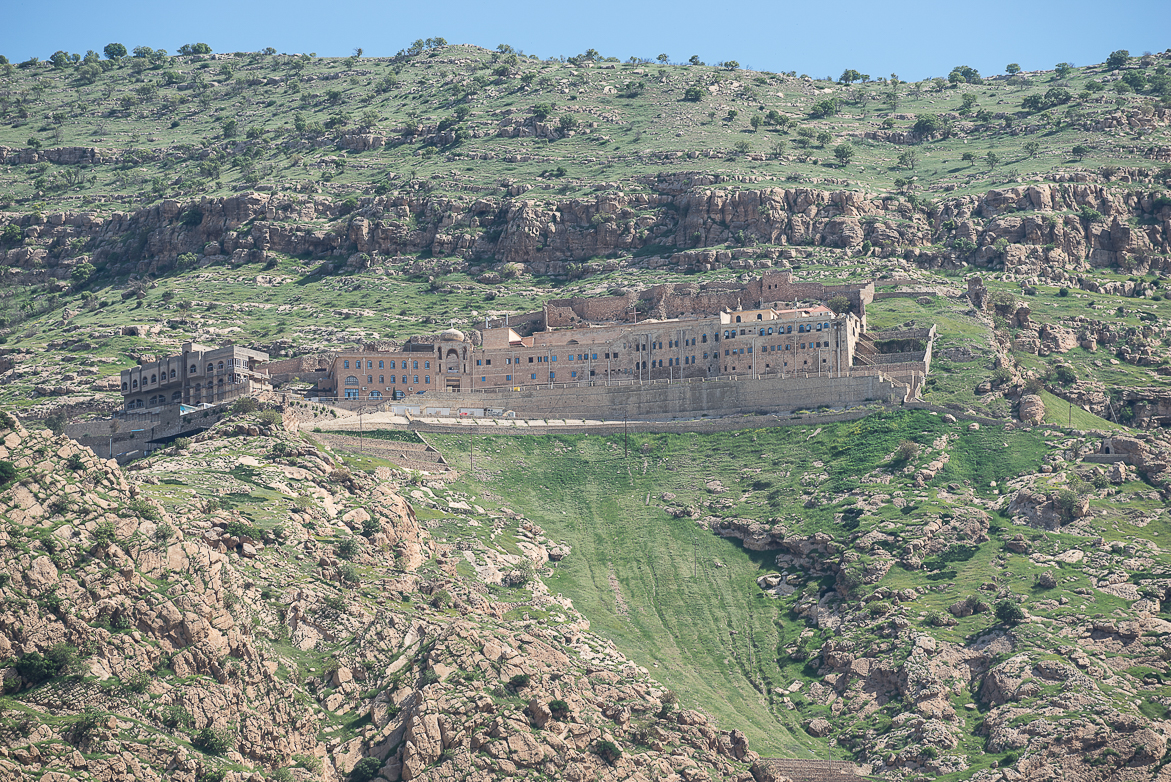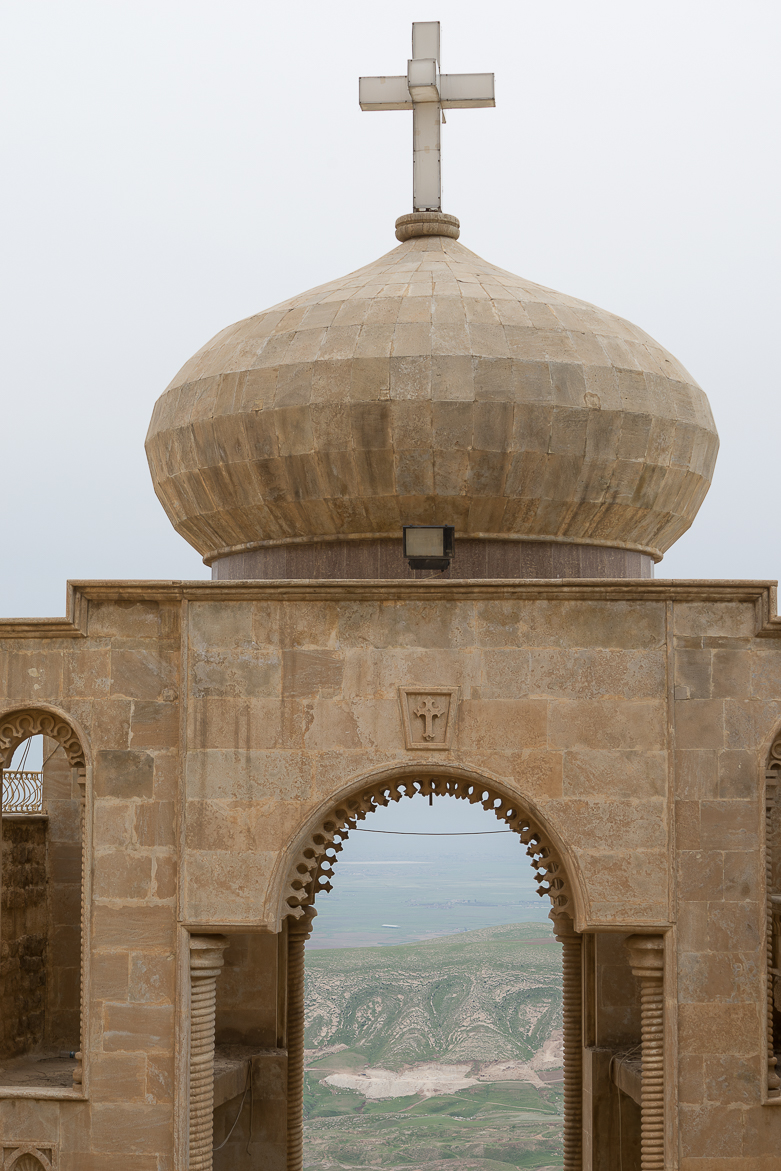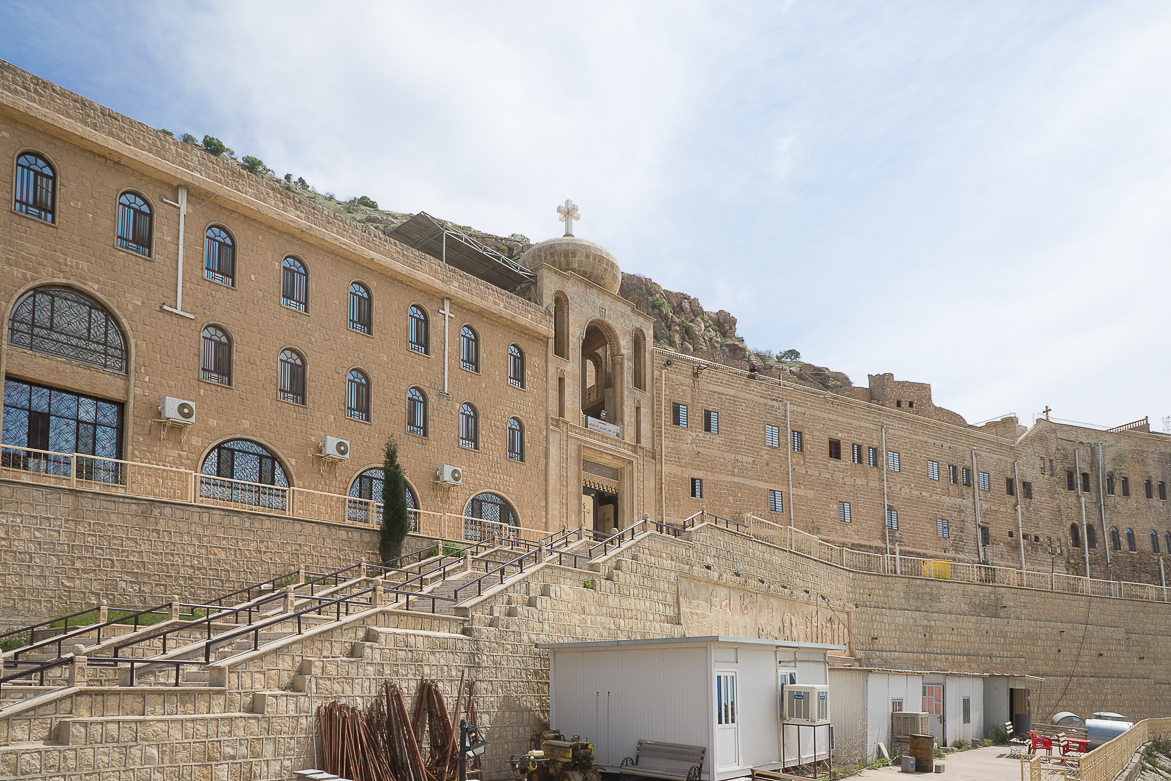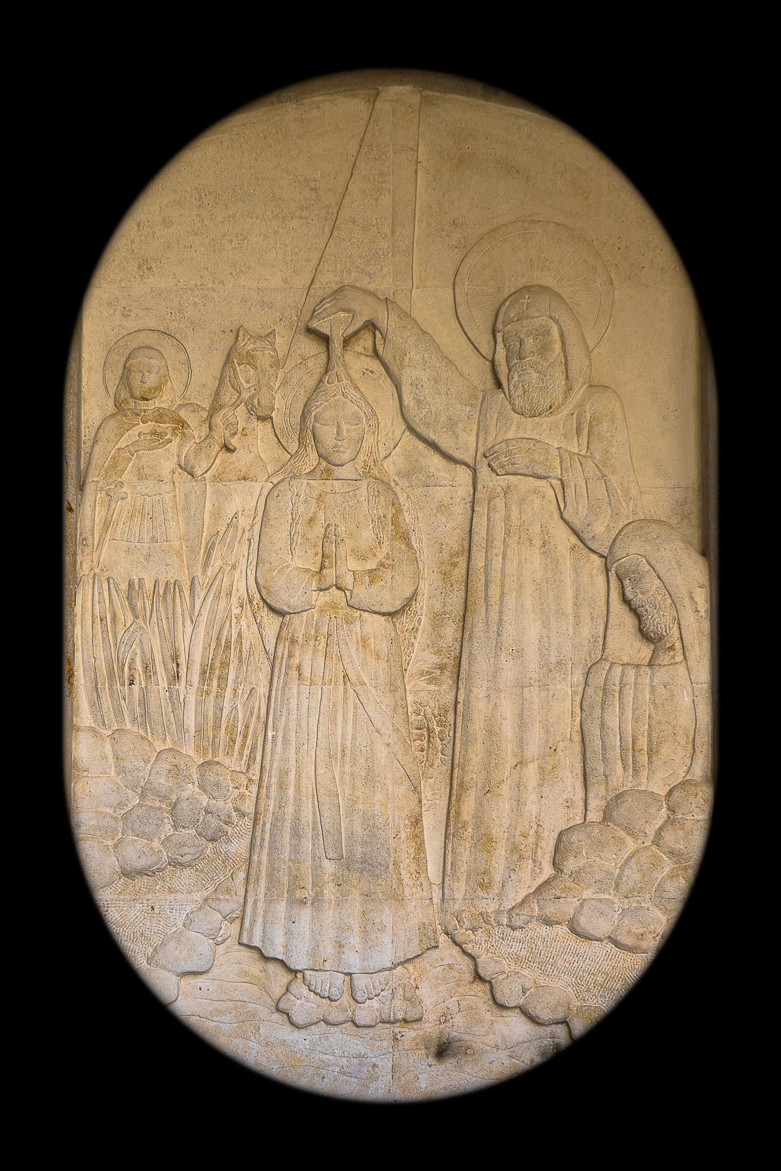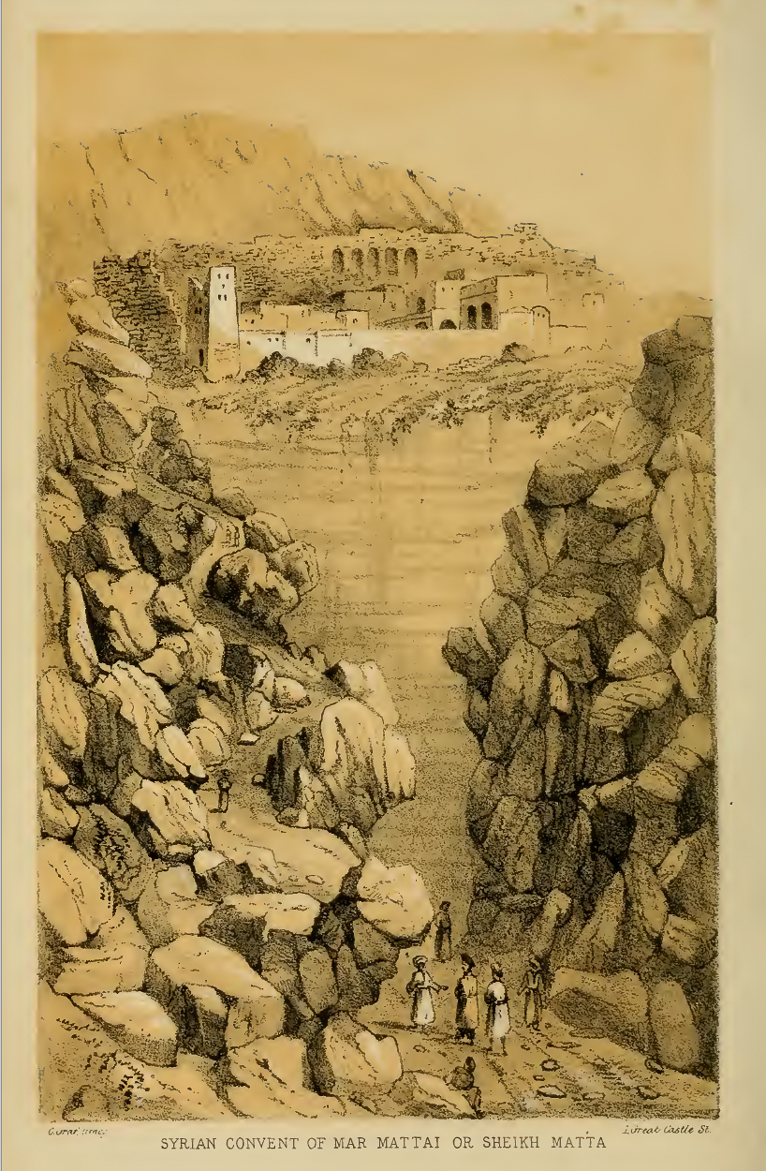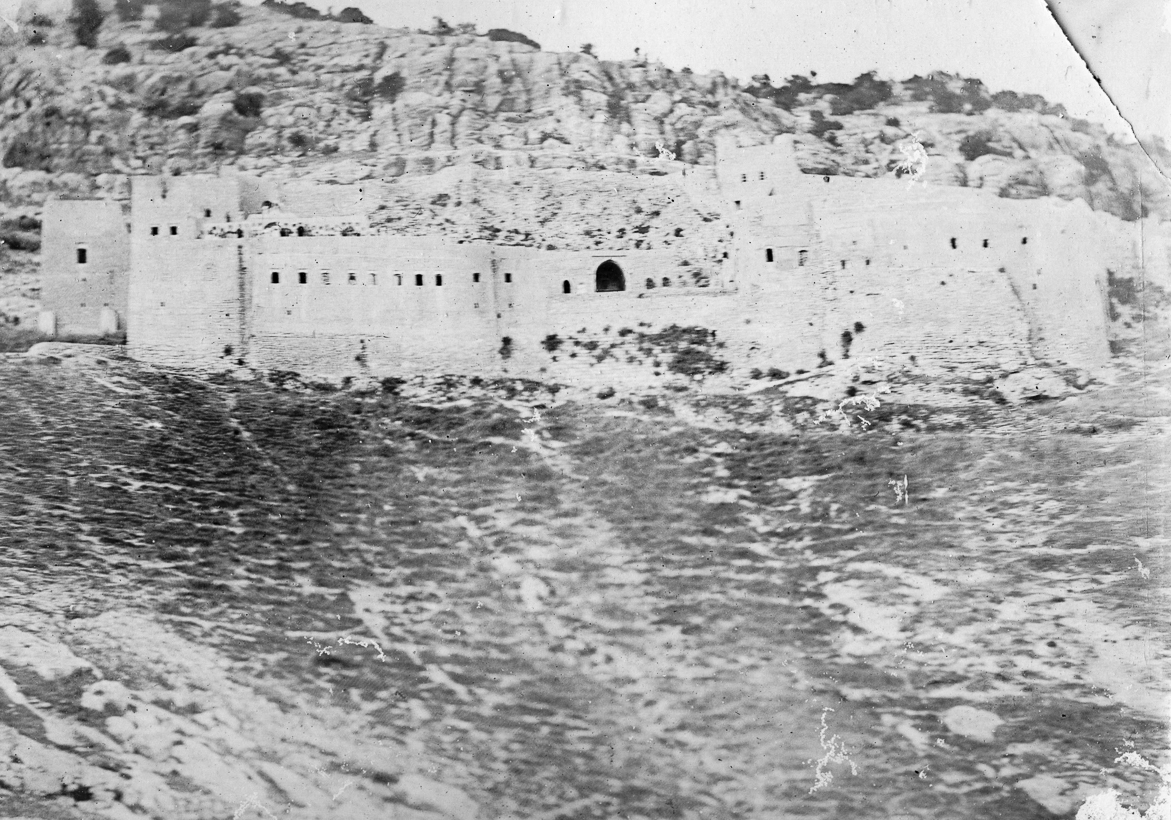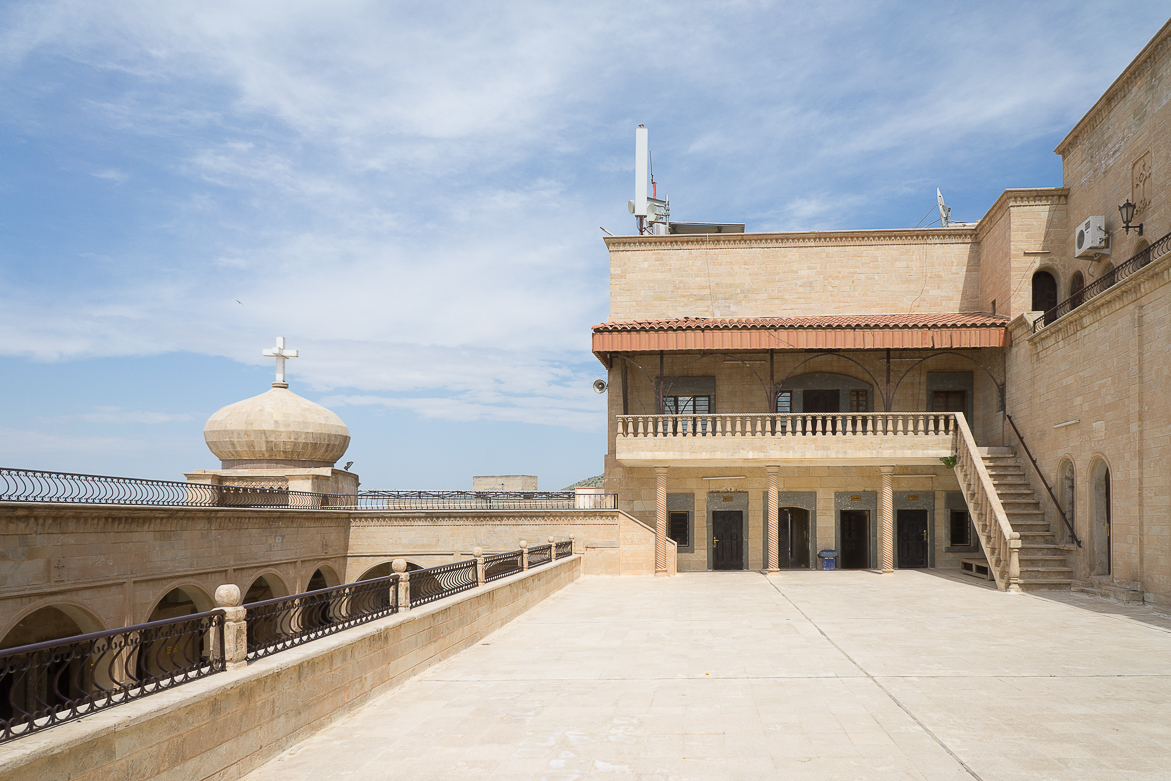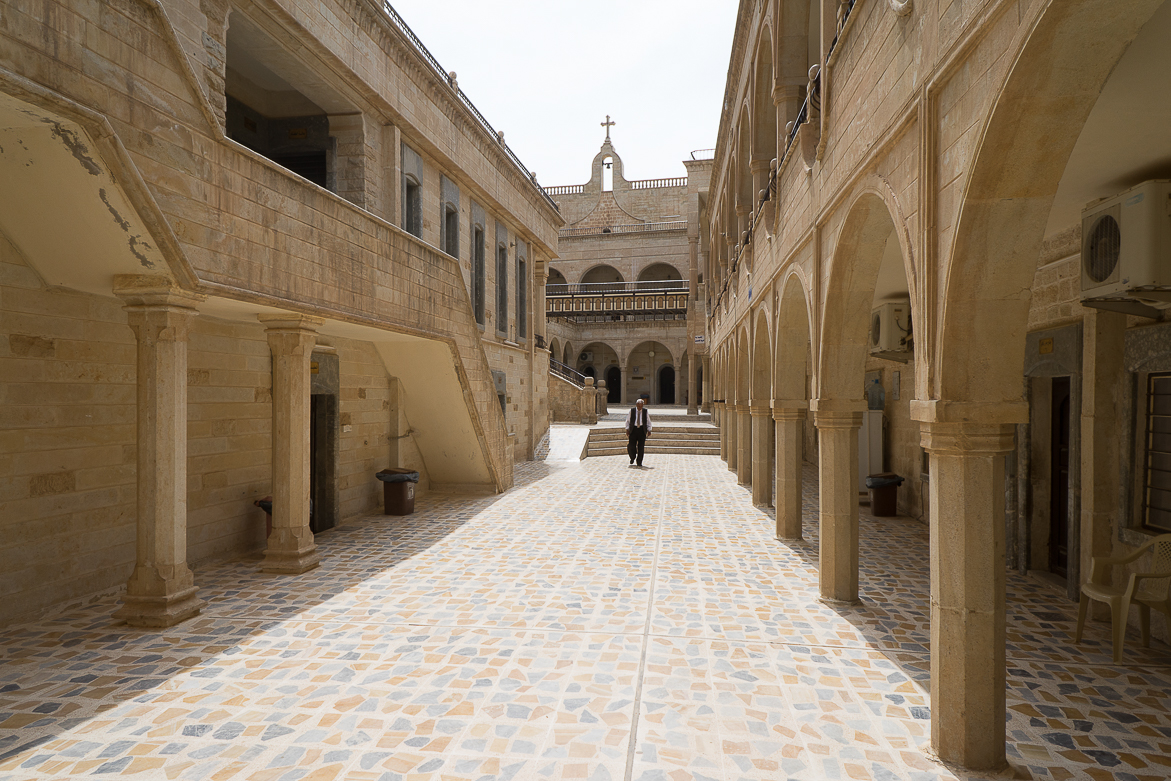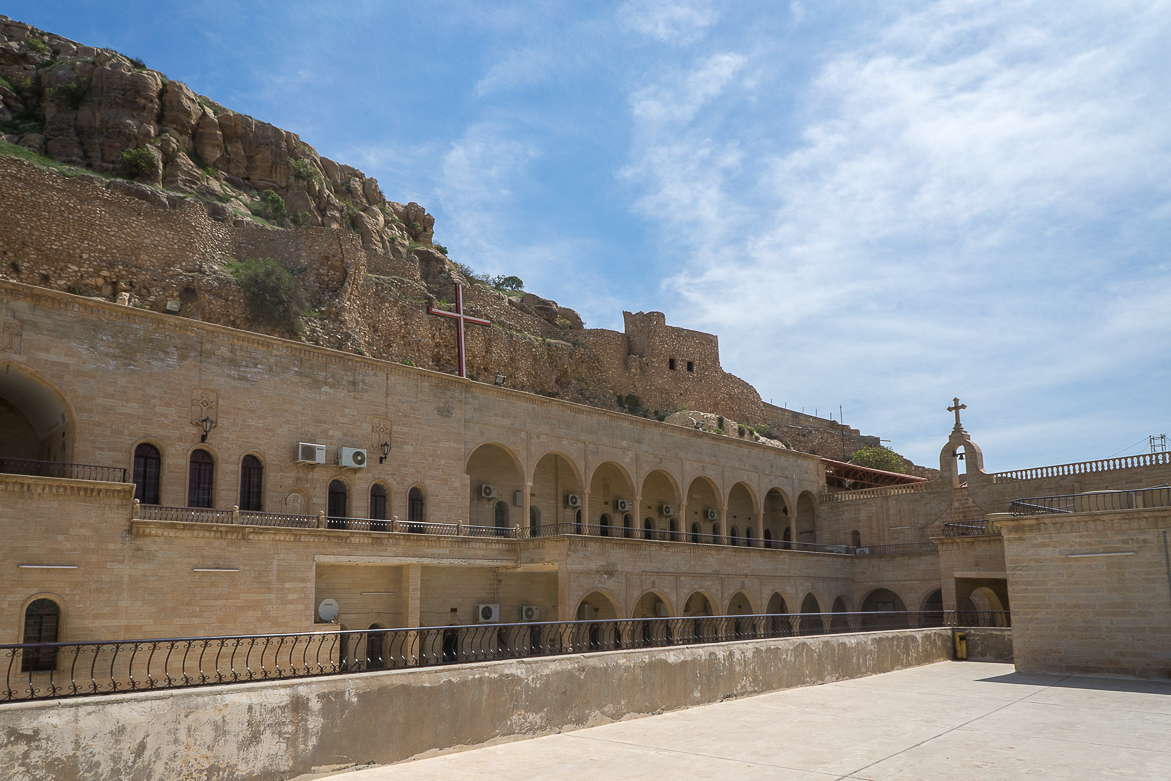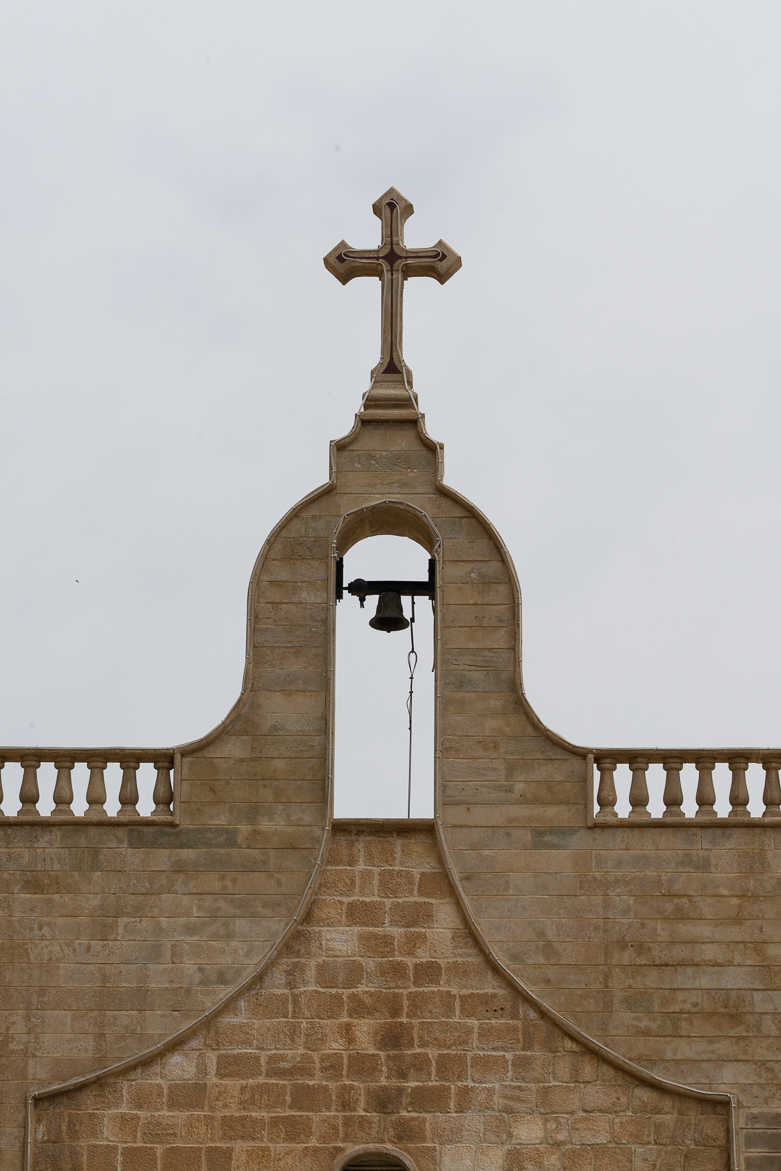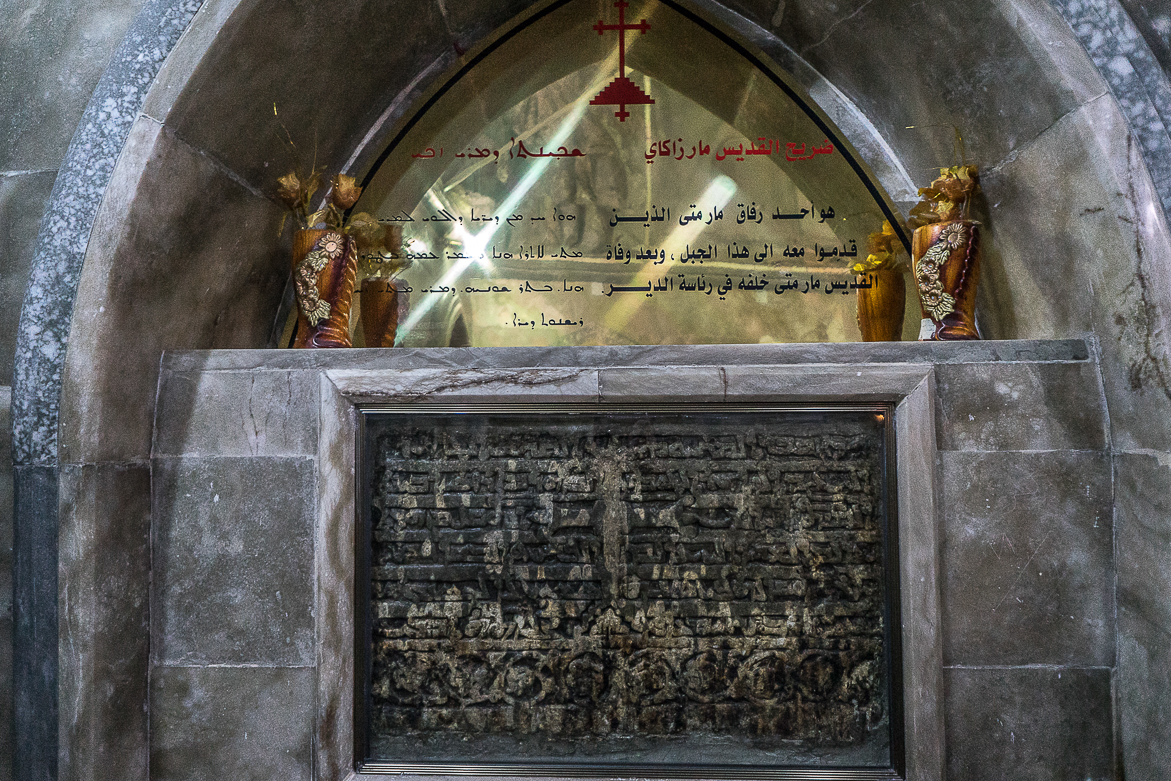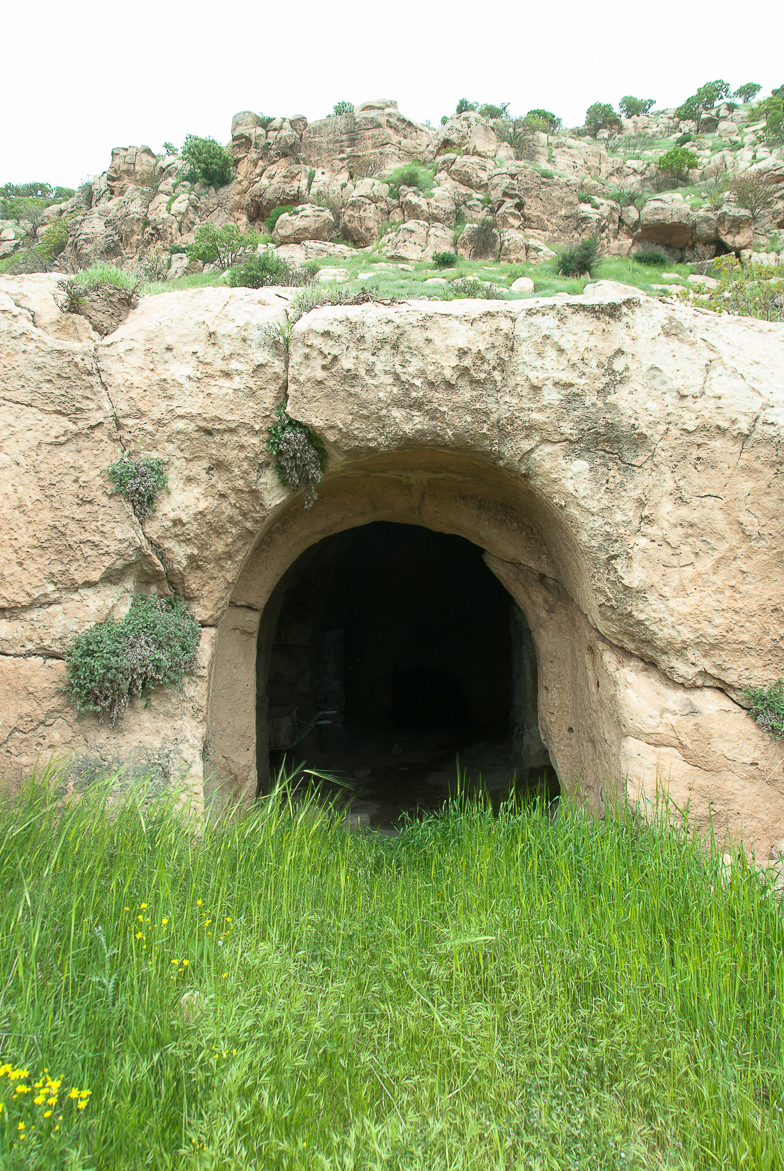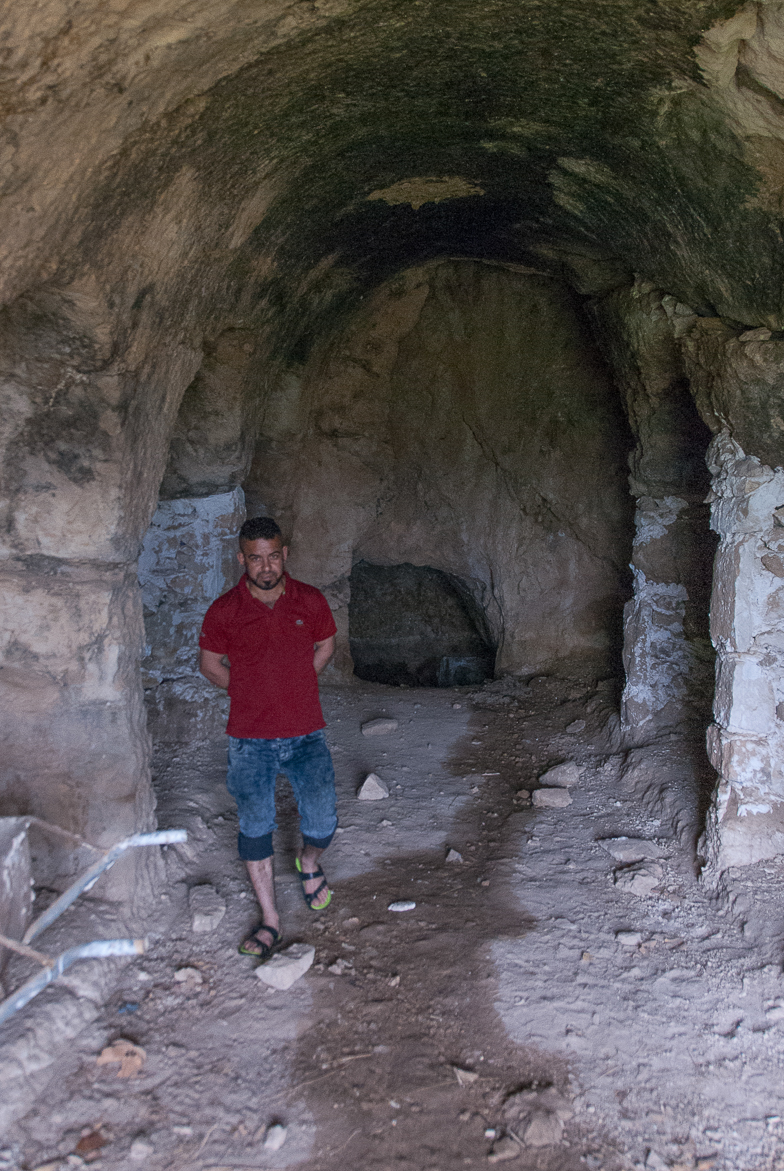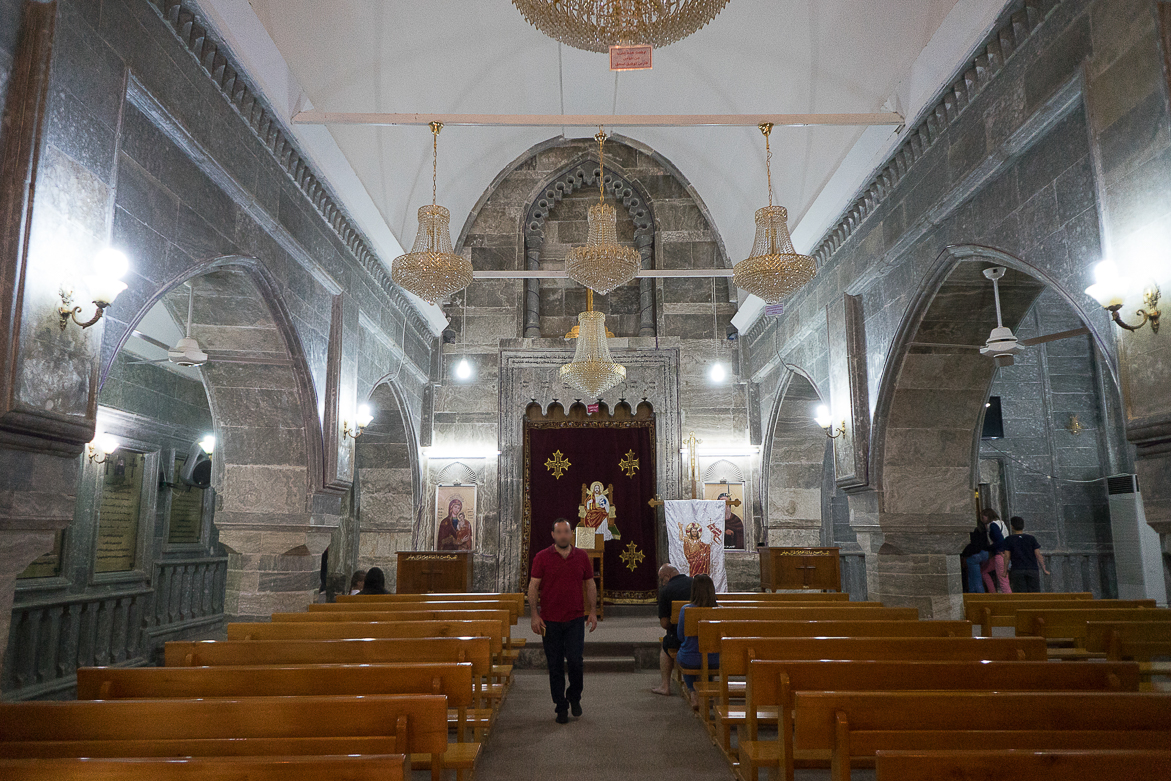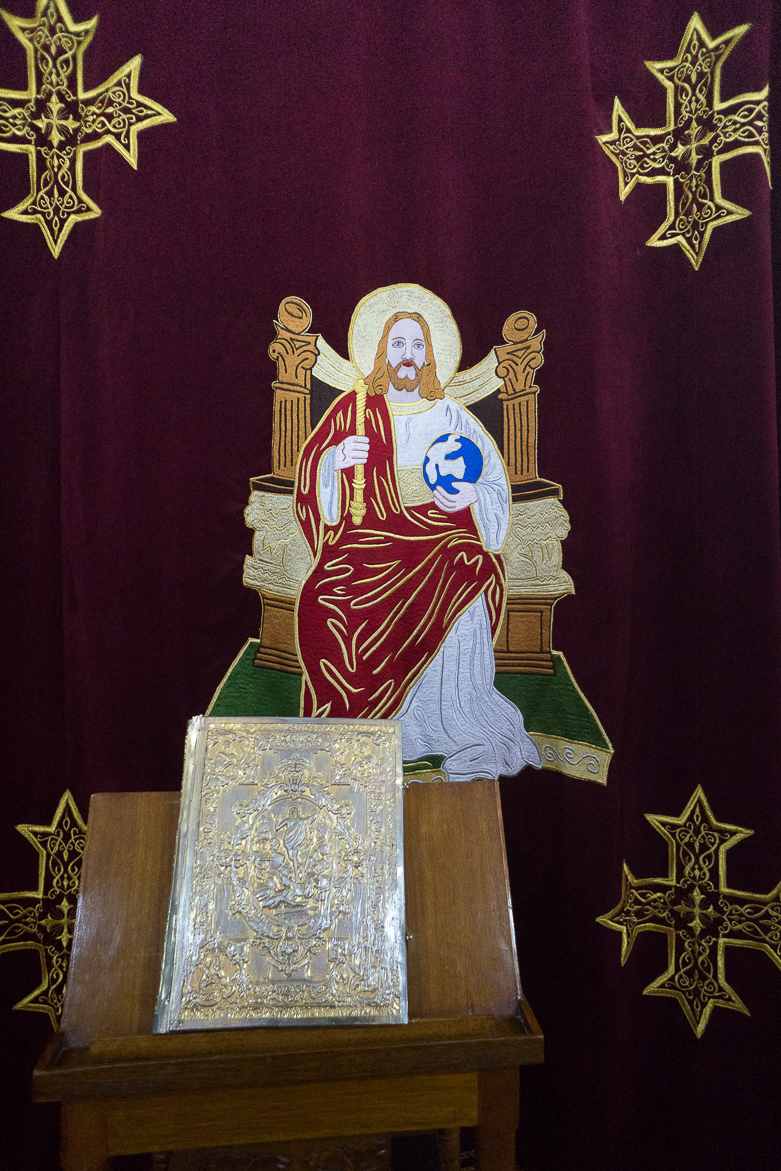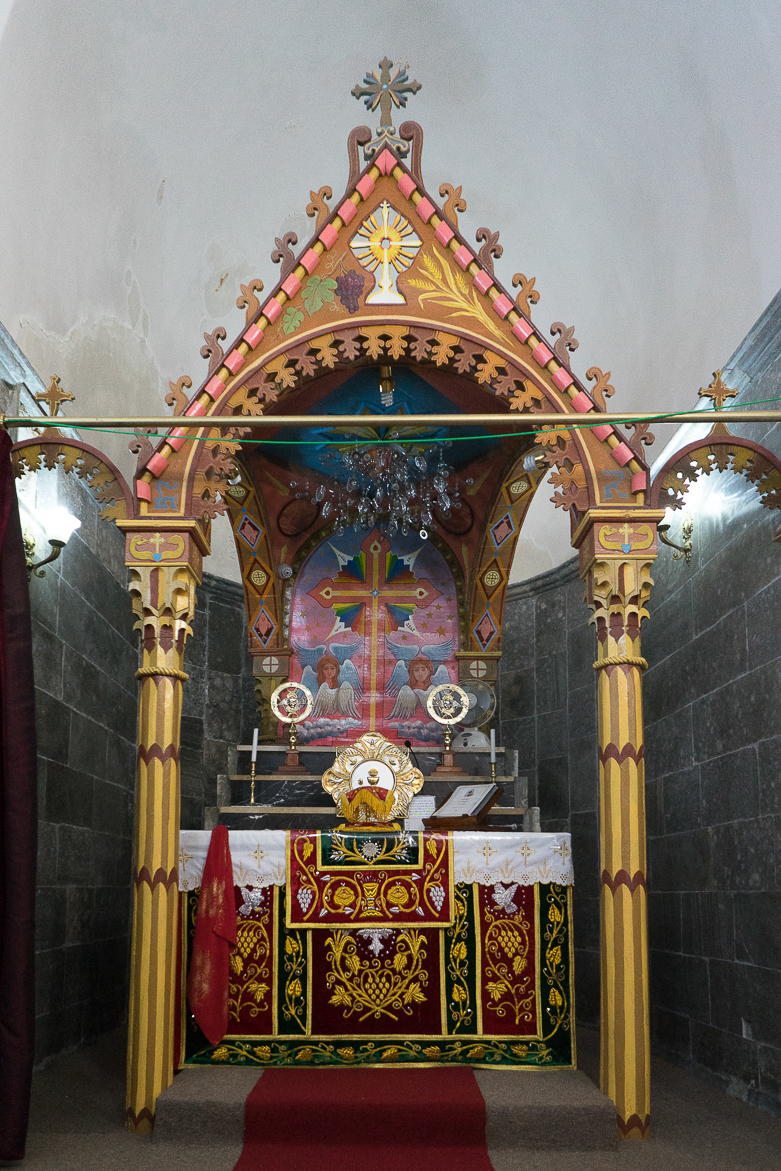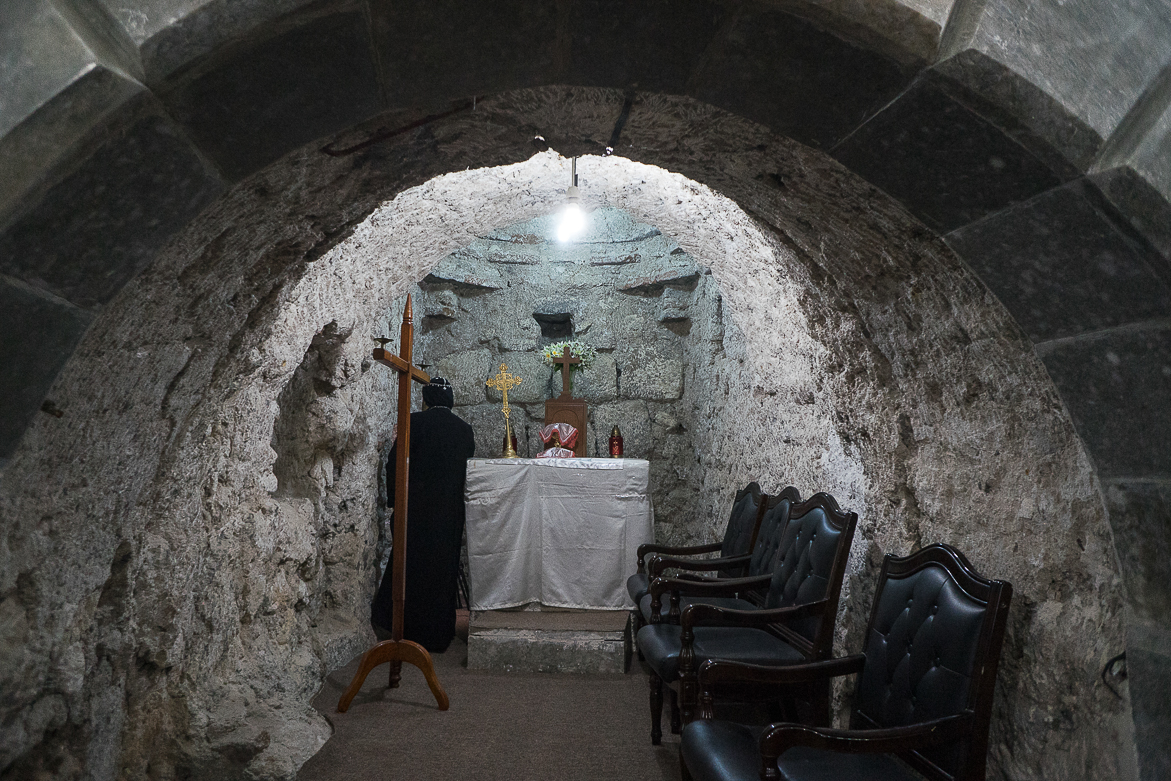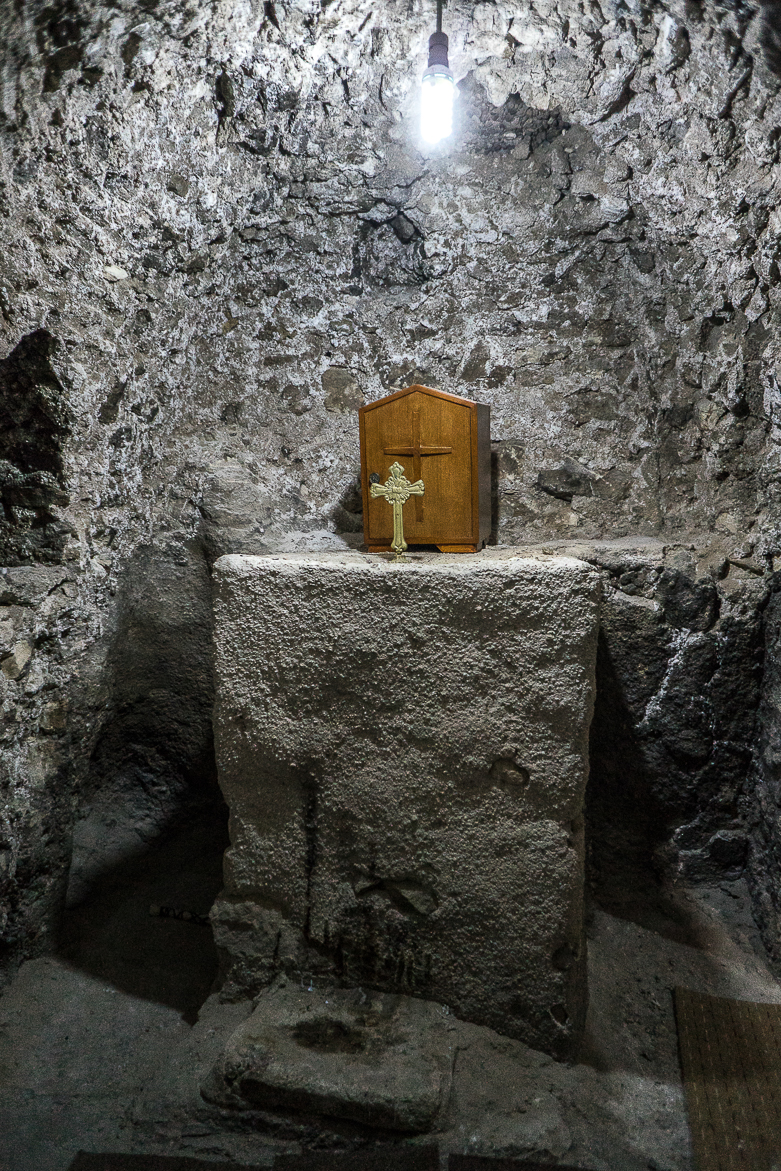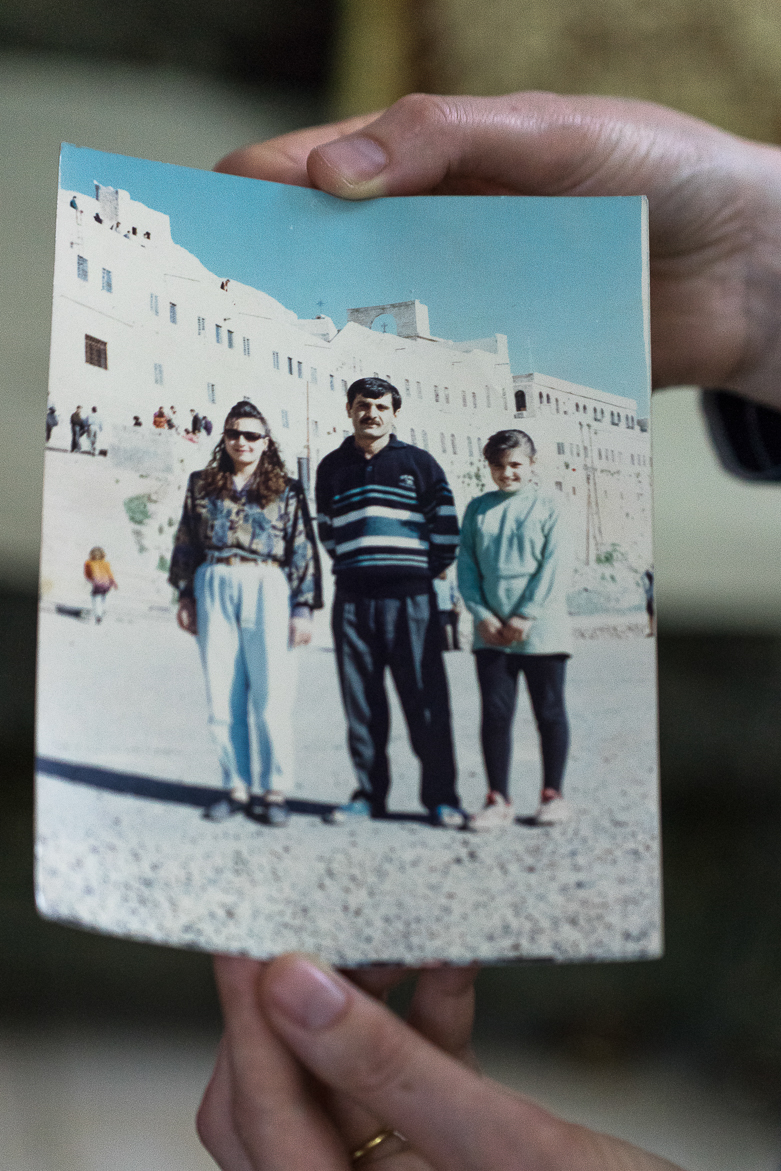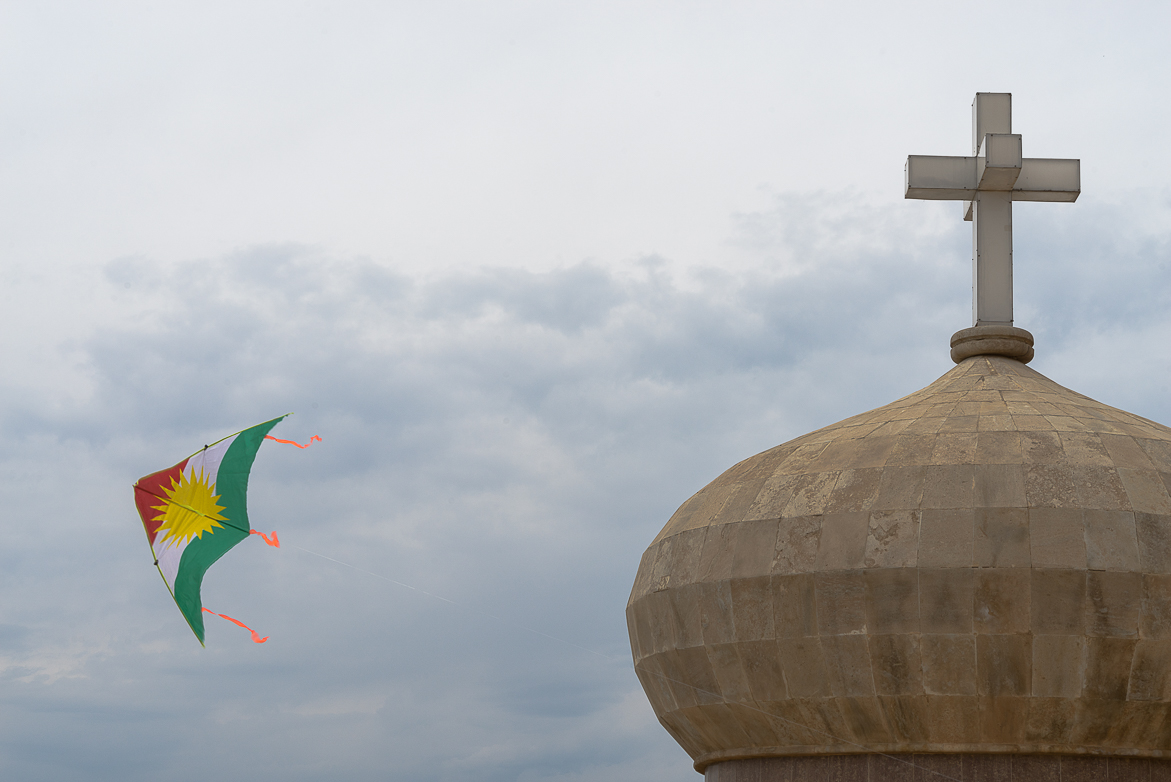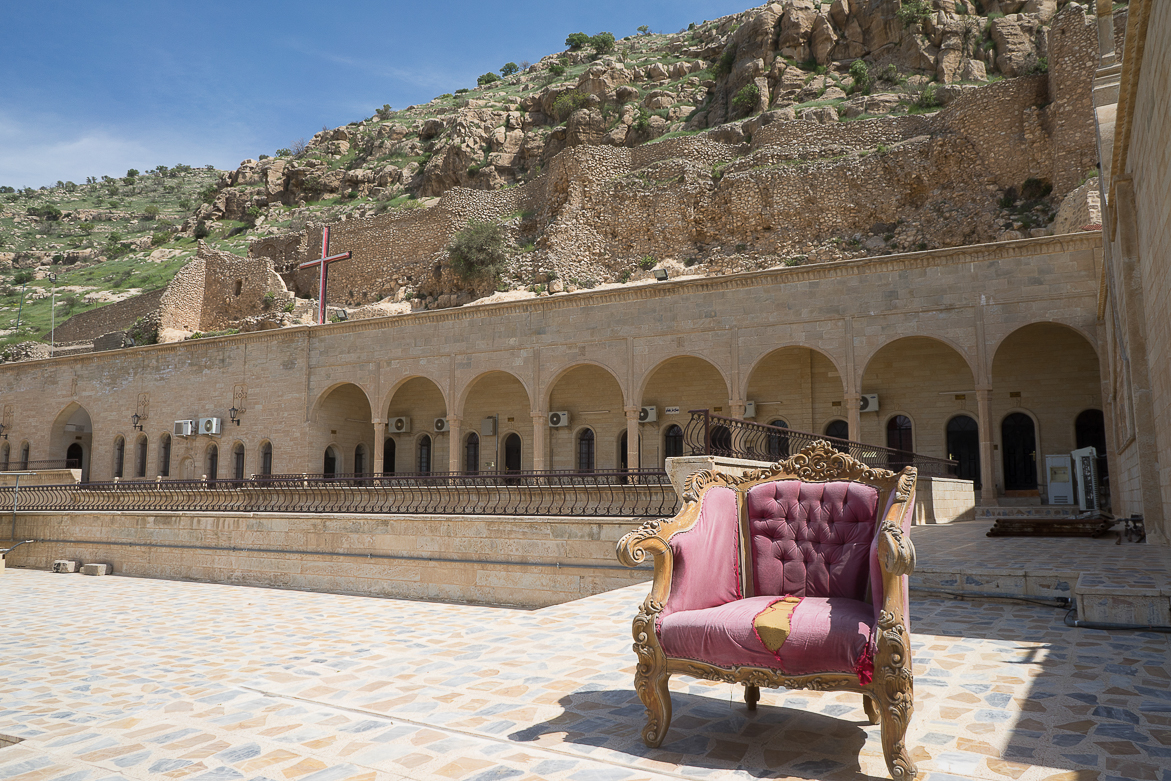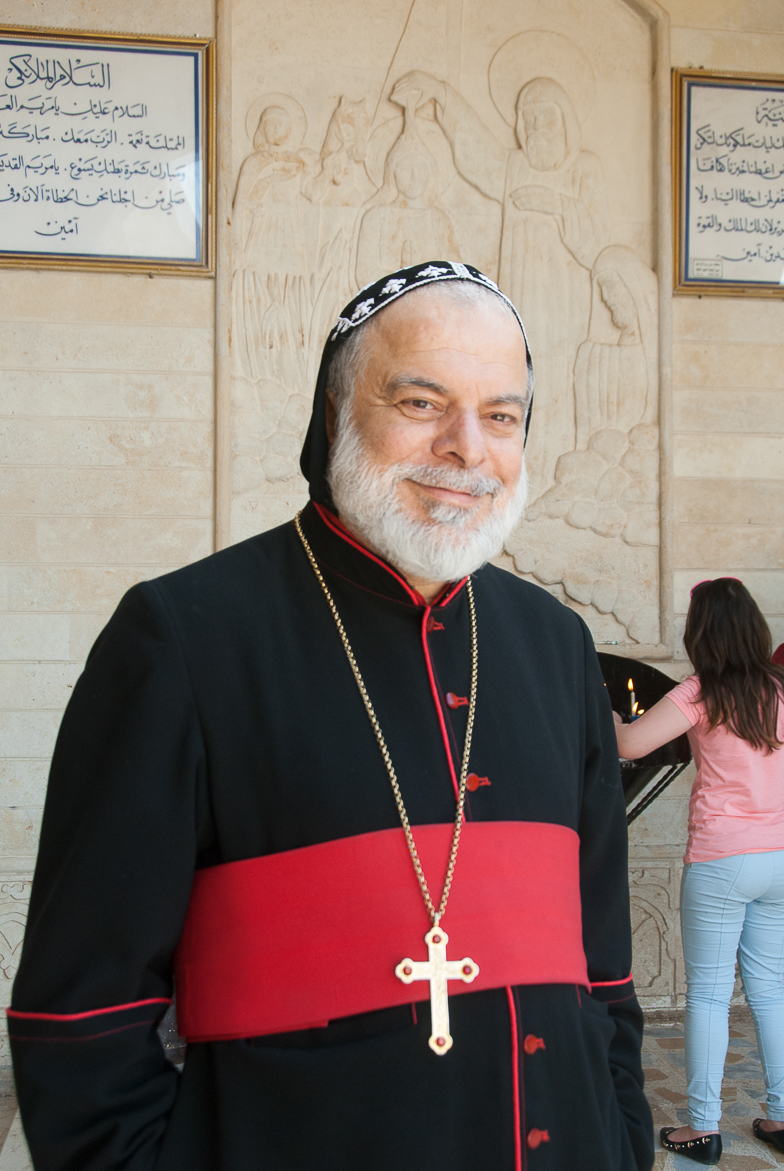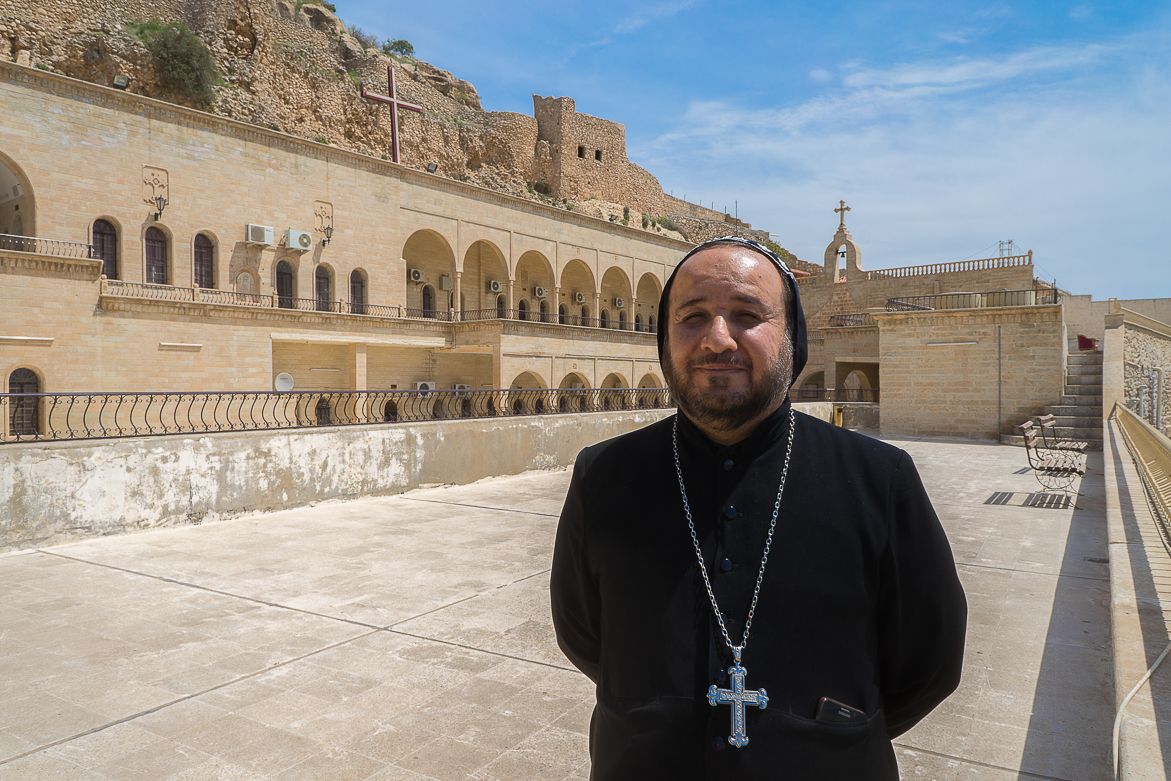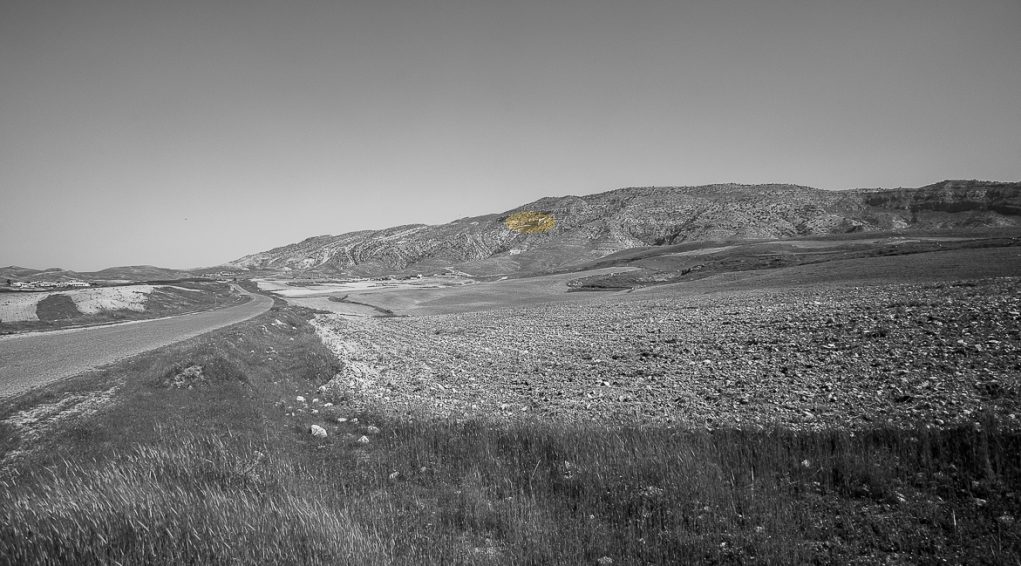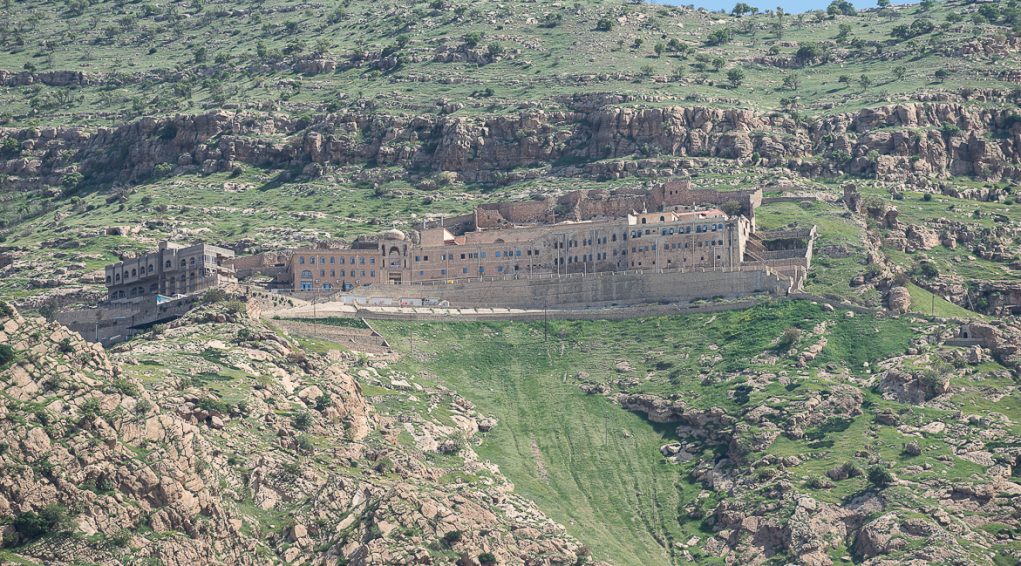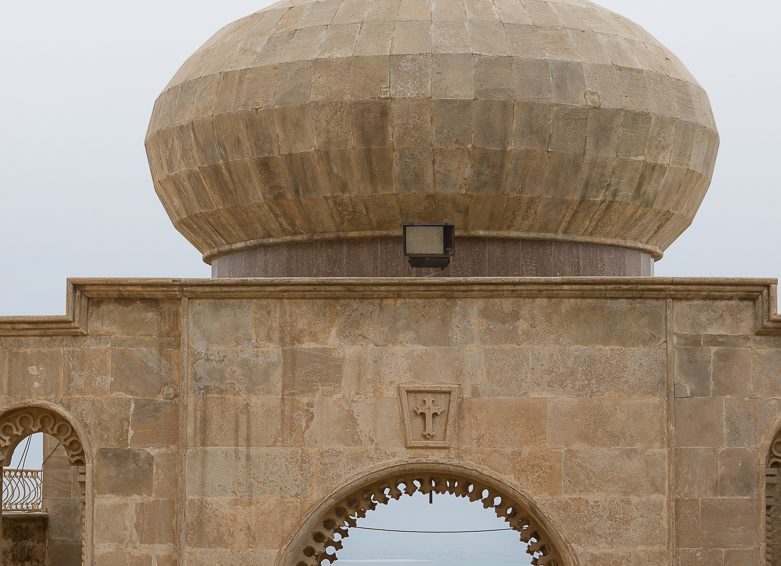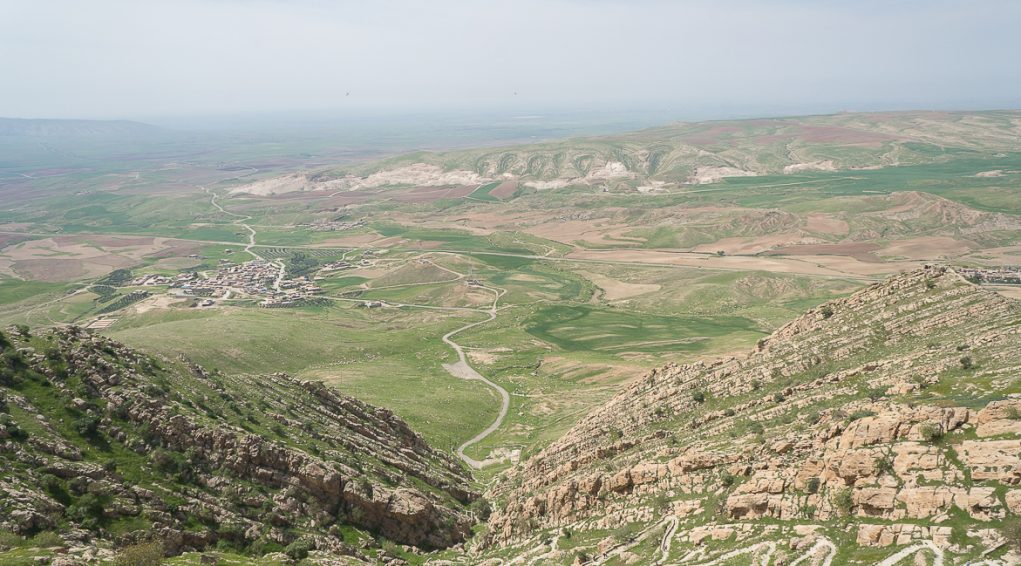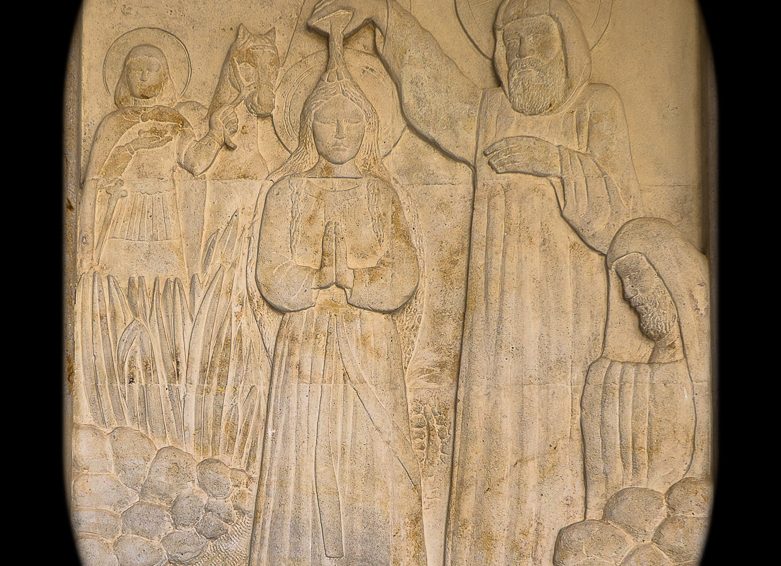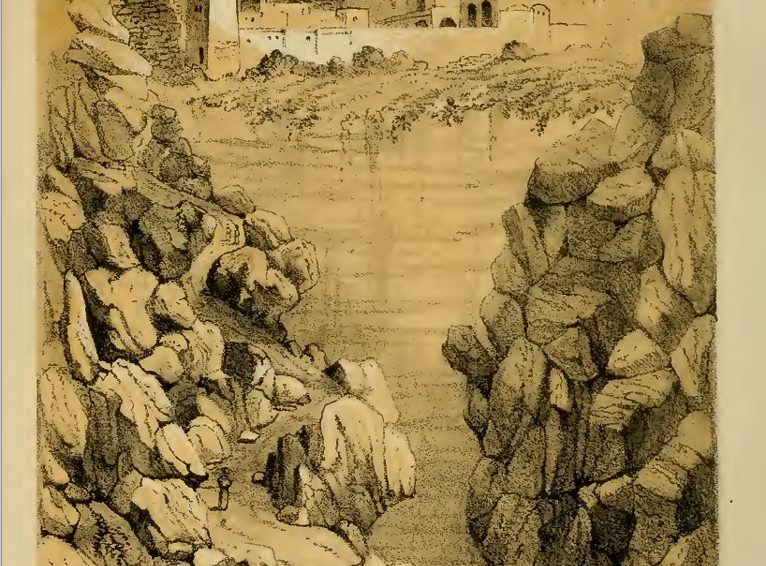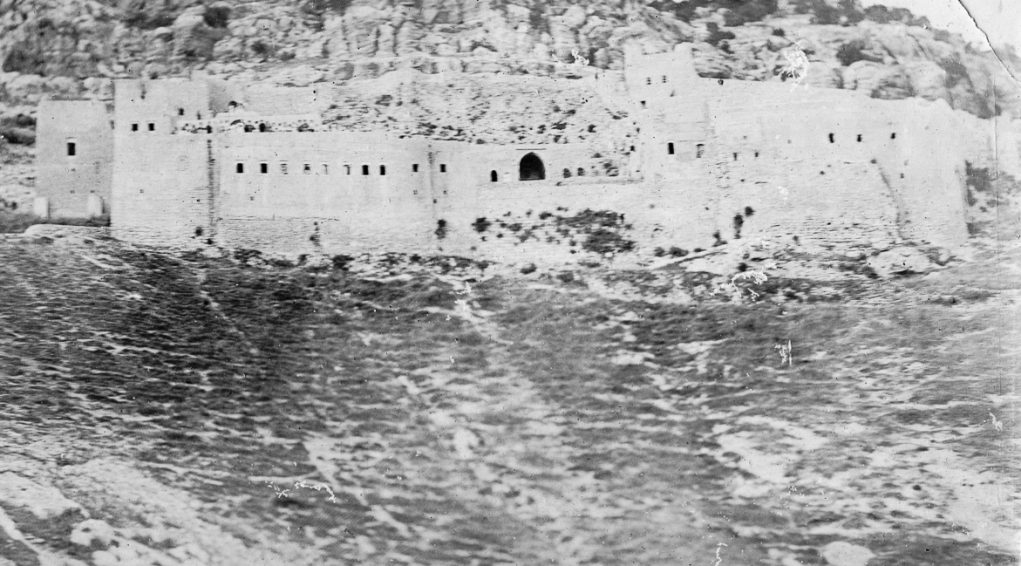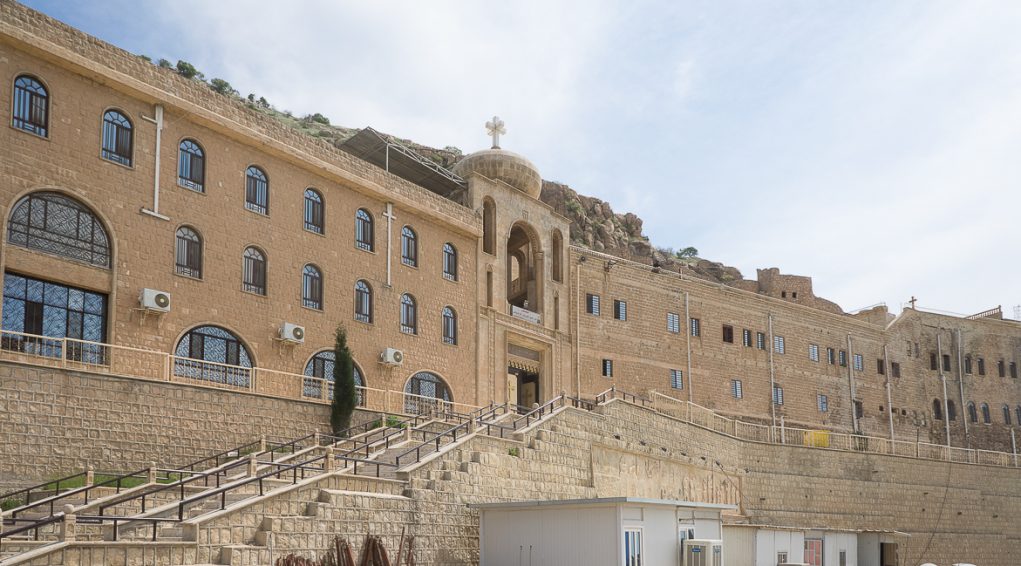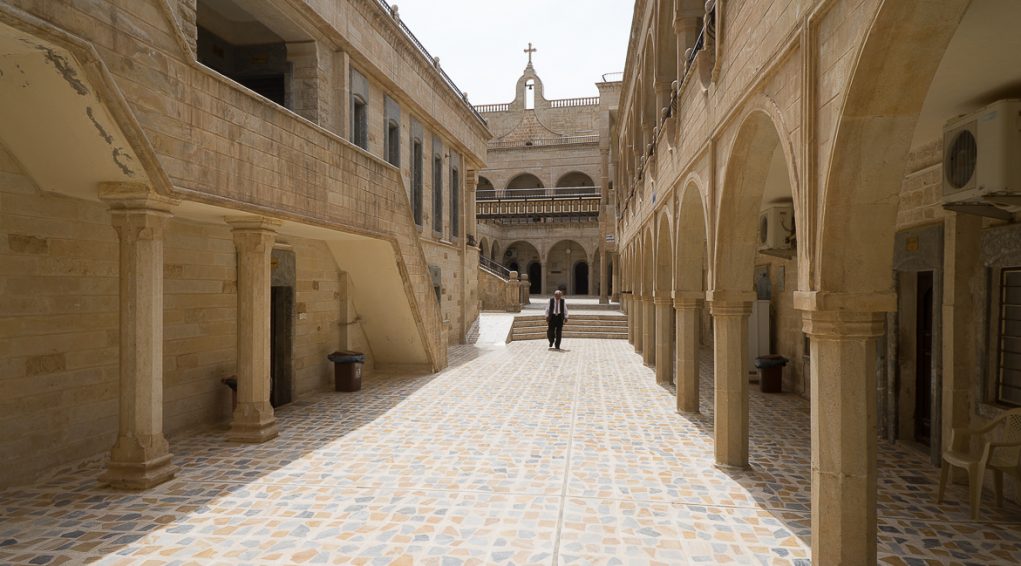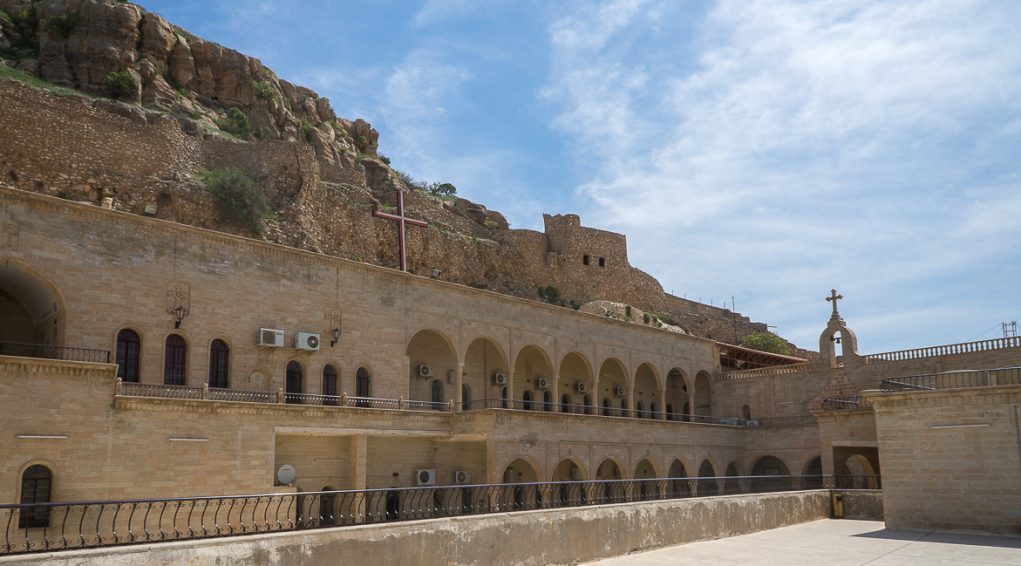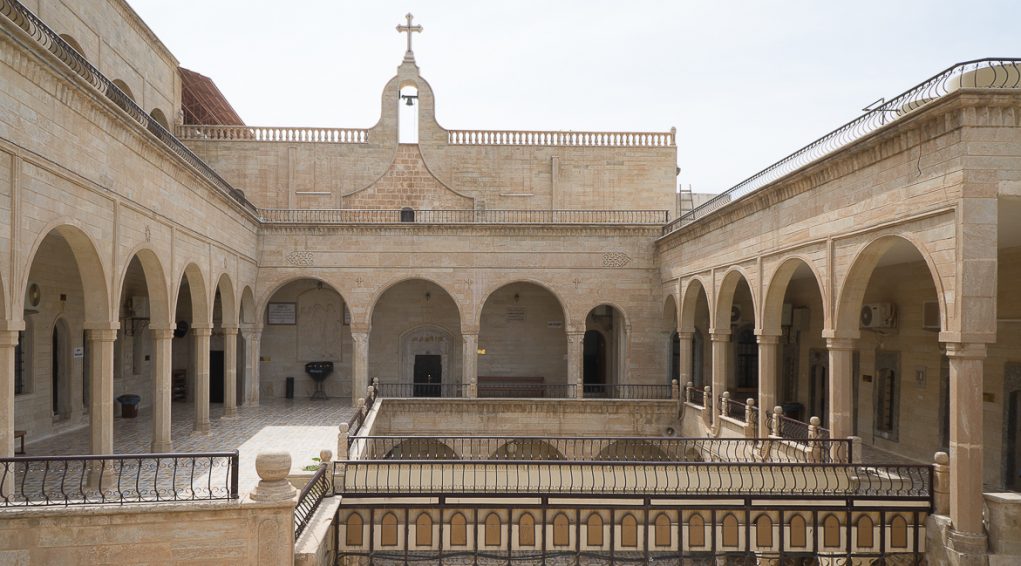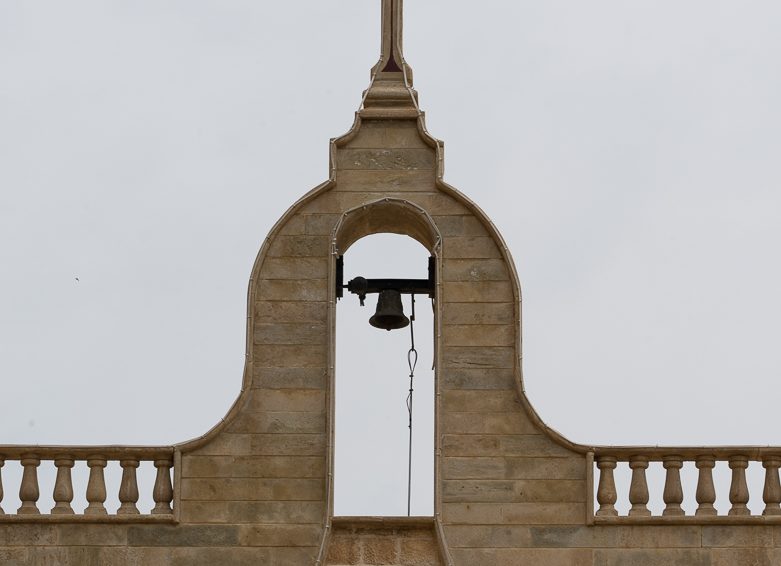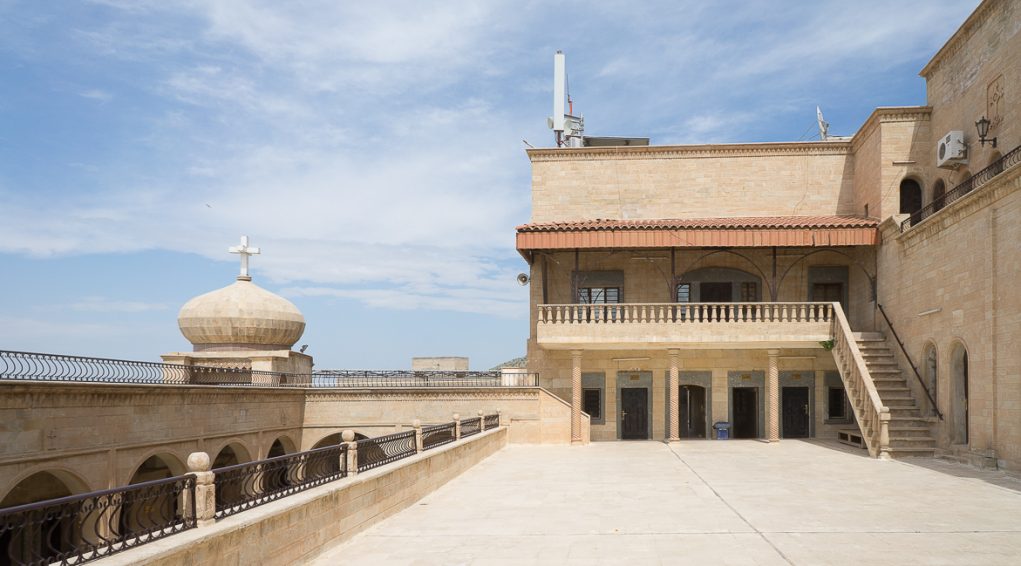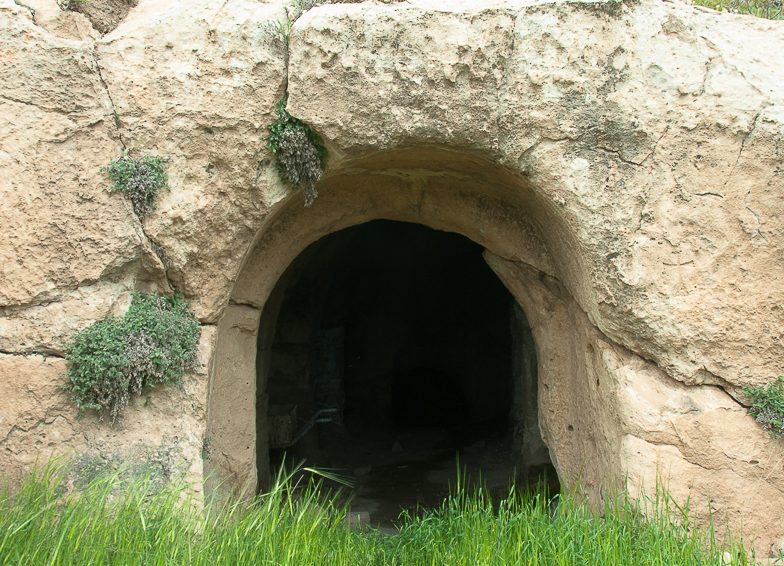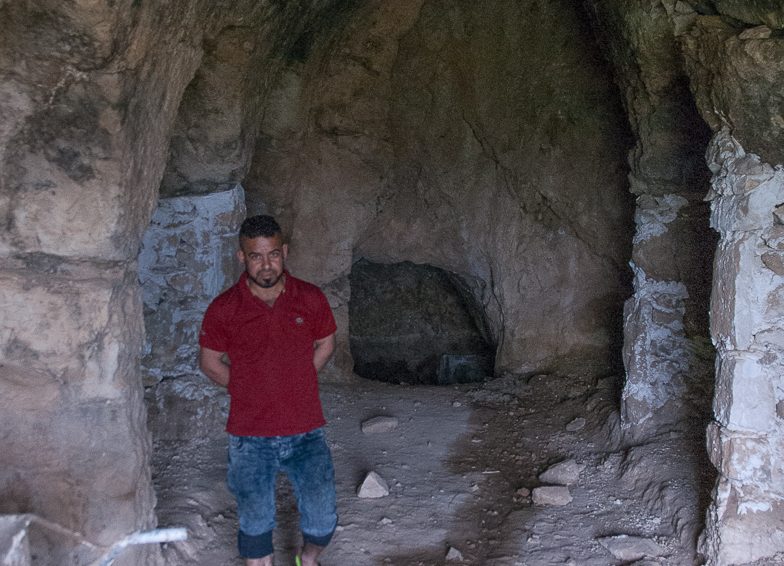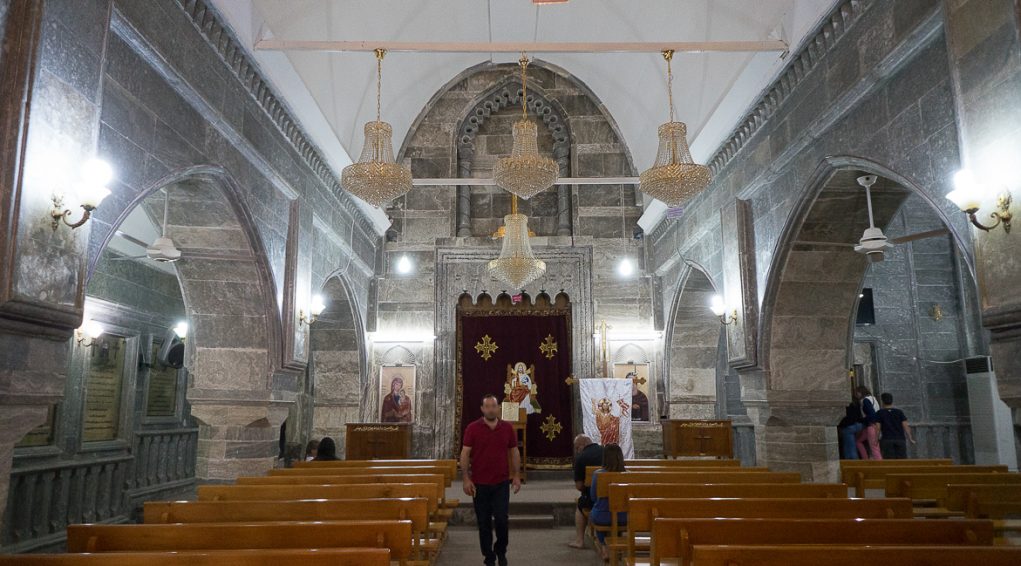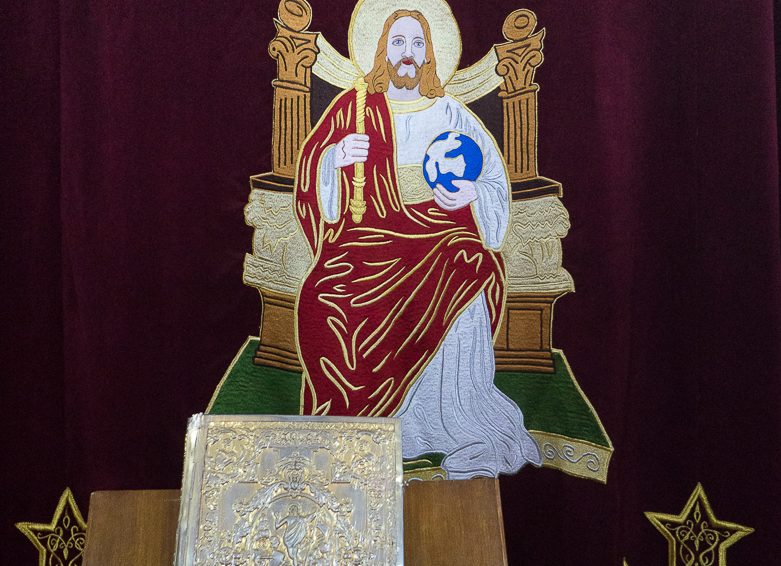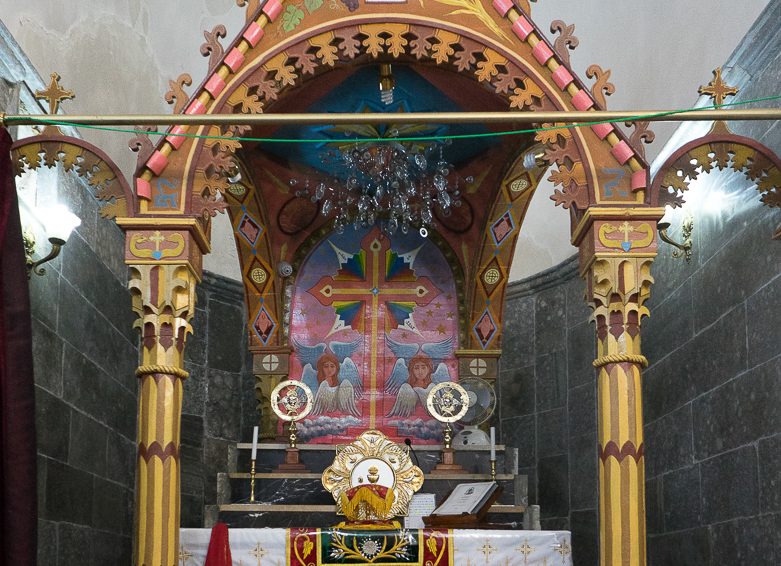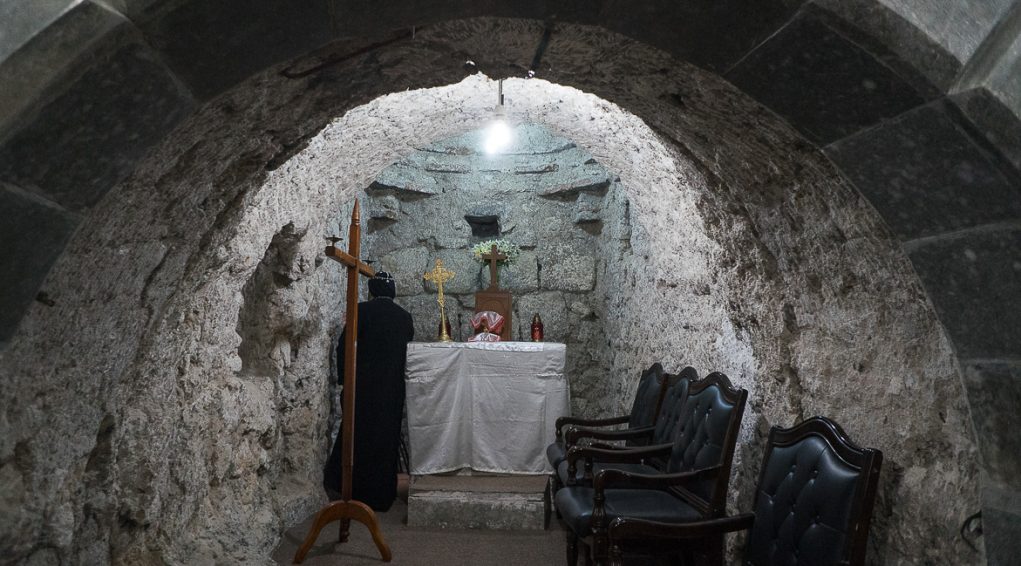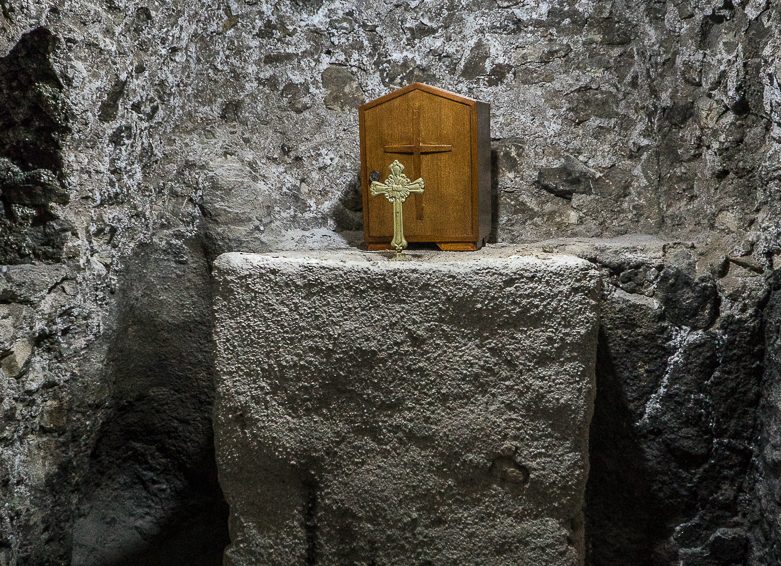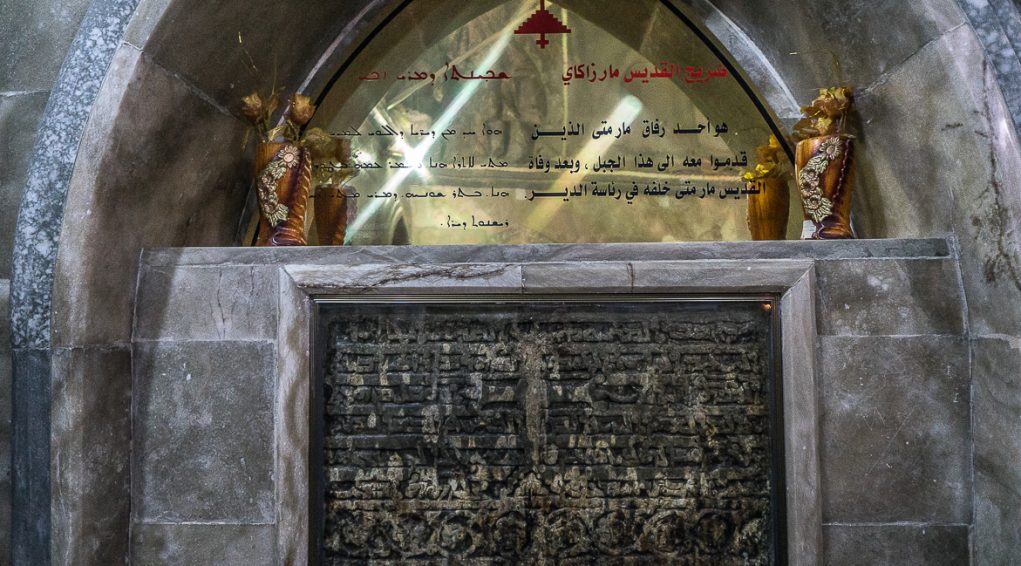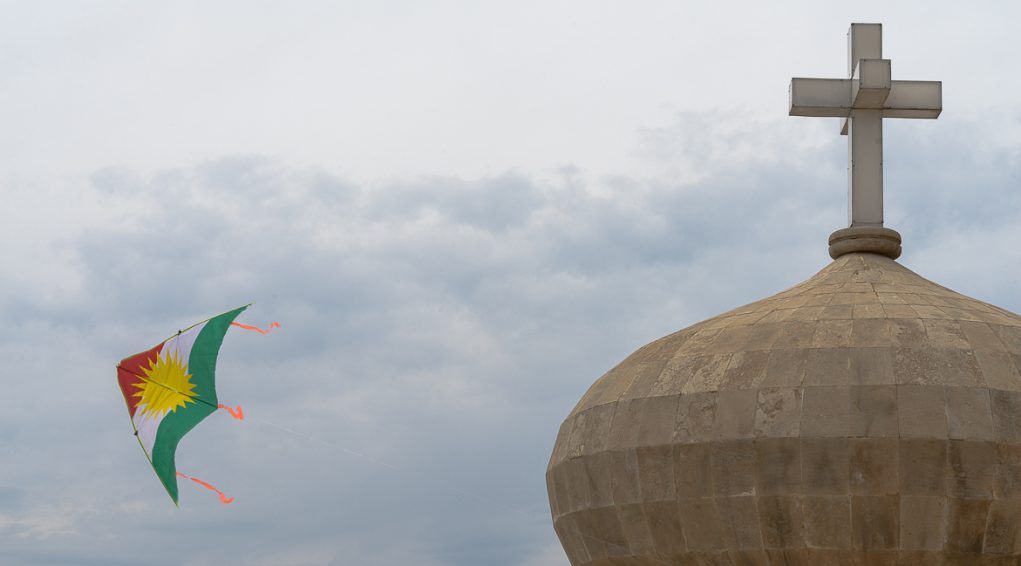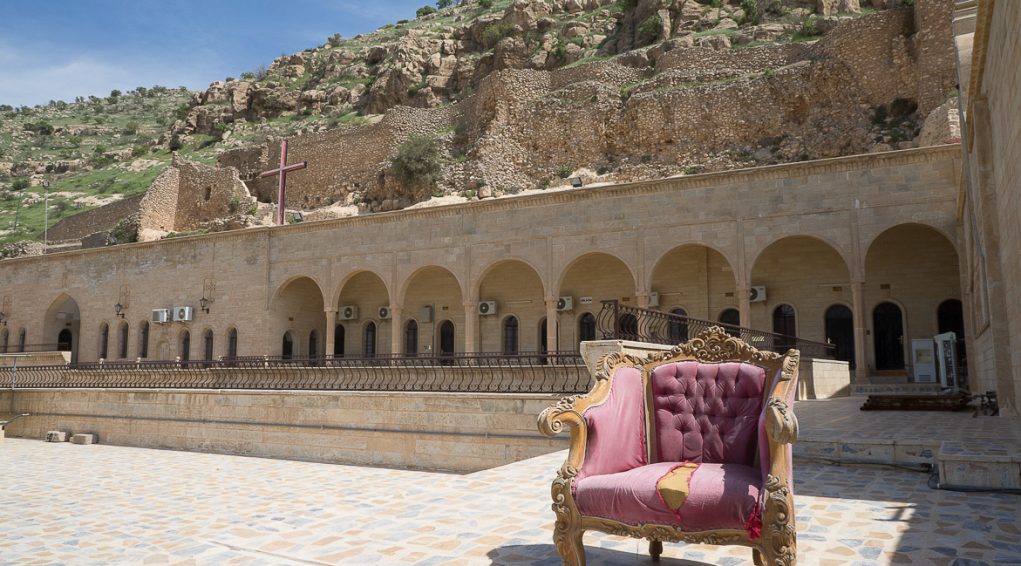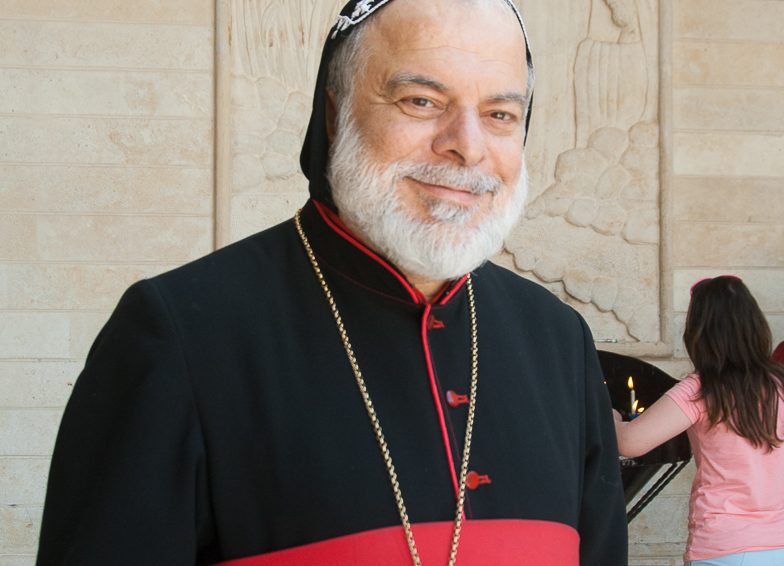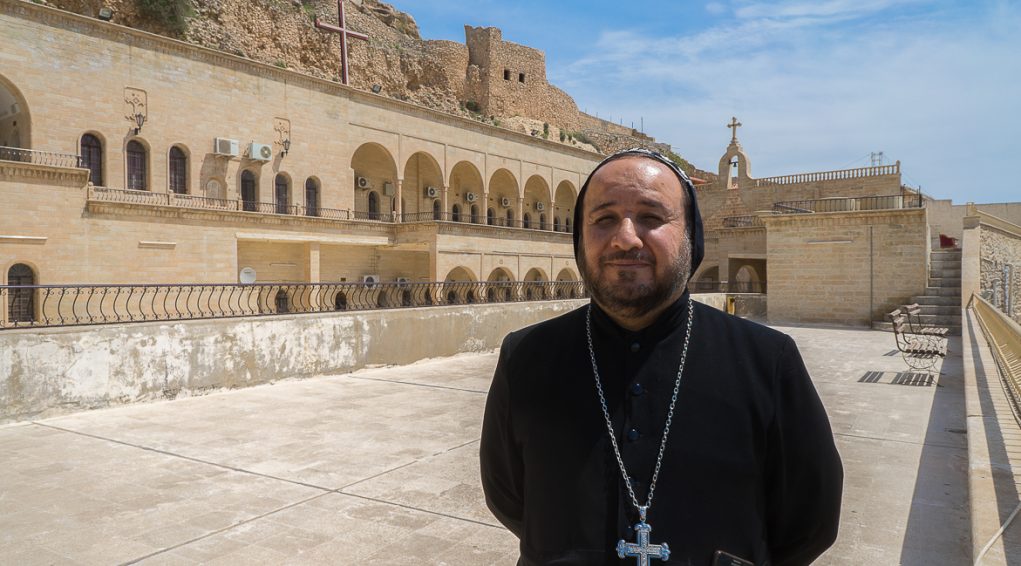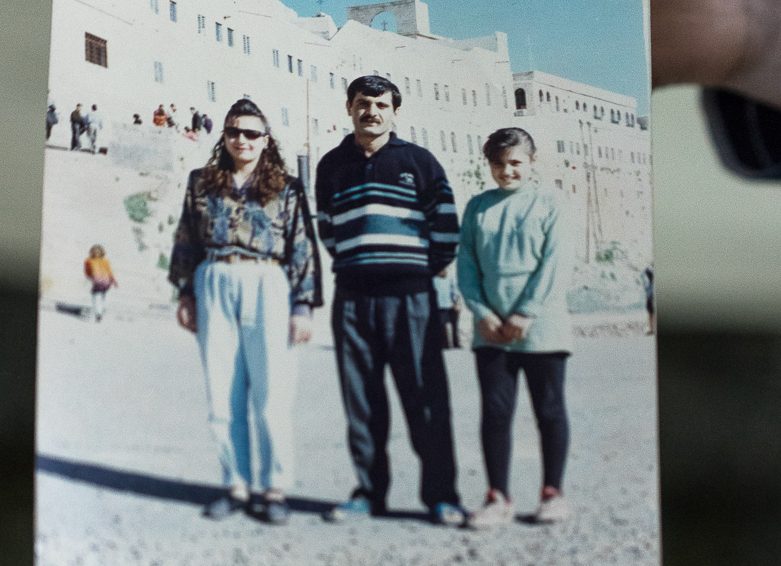Mar Mattai Monastery
Mar Mattai monastery is located atop Mount Maqlub (also known as Mount Alfaf), 820 meters high, in the North of the Niniveh Province and 38 kilometres from Mosul, 36°29′24″ N. and 43°26′34″ E.
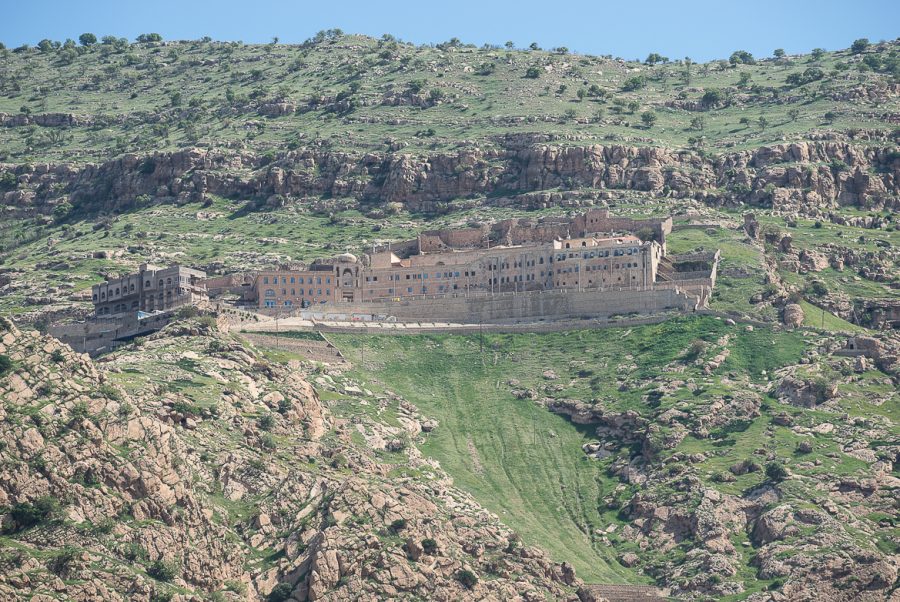
According to the tradition, Mar Mattai came from the region of Diyarbakir in the South-East of nowadays Turkey, and more precisely from the village of Abkarchat.
Mar Mattai Monastery. Plan published in 1852 © G.P.Badger, extract from “The Nestorians and their rituals”, London, Joseph Masters
Location
Mar Mattai monastery is located atop Mount Maqlub (also known as Mount Alfaf), 820 meters high, in the North of the Niniveh Province and 38 kilometres from Mosul, 36°29′24″ N. and 43°26′34″ E.
Seated on the shelf of a rocky peak, this Syriac-Orthodox monastery offers an exceptional double view. As seen from the valley, it appears as being suspended between the earth and the sky and leads us to meditation. On the other side, from its terrace, it offers a 180° panorama and seems to be keeping a watchful eye on the world below, the world of the Niniveh people and never-ending bustle.
Here is undoubtedly the heart of one of the most beautiful area of antique Christian Assyria. This Syriac-Orthodox (Jacobite) monastery, assumed as being one of the largest of whole Mesopotamia, can in terms of influence and majesty compete with some of the biggest Syriac-Orthodox monasteries of Tur Abdin, the « mountain of the worshippers », in modern-day southeastern Turkey.
The golden legend
According to the golden legend – the tradition, Mar Mattai (Matthew) came from the region of Diyarbakir – Amida in Syriac – in the South-East of nowadays Turkey, and more precisely from the village of Abkarchat. Matthew was already a monk when he had to flee from the persecution of the Roman Emperor, Julian the Apostate, who was then trying to abolish Christianity, just less than 50 years after the conversion of his uncle Constantine I.
As a coincidence, in that very same year 363, Julian died, after he fought against the Sassanid Persians at the Ctesiphon battle, and the monastery is supposed to have been founded.
Mar Mattai’s hagiography is deeply linked to the baptism and martyrdom of Behnam and Sarah as well as to the conversion of their repenting father, Sennacherib, King of Nimrod (see notice on Mar Behnam Monastery about that point). According to one tradition, the monastery is said to have been built by Sennacherib on the Mount Maqlub, on Mattai’s formal request. According to another tradition, the foundation of the monastery should be attributed to Queen Shirin’s initiative.
The script of Matta-from-Diyarbakir’s life, as passed on by popular tradition, could be criticized on a « historical truthfullness » point of view, as pointed out by the orientalist Jean-Maurice Fiey in his work « Christian Assyria ». While elaborating his own scientific argumentation, he also quotes the remarks of the Syrian Orthodox Patriarch of Antioch and all the East, H.H. Mgr Ignatius Jacob III. The Dominican orientalist underlines however one ecumenical focal point : « basically, the Nestorians agree with the Jacobites : the monastery was founded by a « Greek » anachorite in the 4th century, or at the lasest at the beginning of the 5th century. »
History
The monastery became quite early subject of the Syriac-Orthodox jurisdiction, and it is assumed to have sheltered thousands of monks from the end of the 4th century onwards. In fact, it could be possible that this shoud concern not only the monastery but the whole Mount Maqlub, also known as the « Mount of the thousands ». This actually gives us quite an idea about the influence of the Syriac-Orthodox Church and of Mar Mattai Monastery in the Northern part of Mesopatamia and beyond. As place or residence of the Maphrian of the East, after after he left from Tikrit (Maphrian is the title for the Syriac-Orthodox Church’s prelate in Mesopotamia. The Maphianate of the East ended up in 1859), the monastery developed close links with the Malankara-Syrian Church in India.
Although it was regularly attacked by the Kurds, in particular in the 12th and 14th century, the monastery became of place of resistance as much as a shelter for local and regional Christian people, who were being persecuted. Thus, the Patriarch of the Church of the East, Shem’on XXII Paul, went there to get some assistance and some rest in 1918, after the Assyrian-Chaldean genocide in the Ottoman Empire, whereas 60000 Assyrian people from his own community in Urmia (Persia) were forced to a dreadful exodus to Mesopotamia.
Physical description
This monastic complex is composed of several churches (the main one is consecrated to Mar Mattai), votive chapels and memorials. To this, must be added numerous caves, dug into the mountain, where anachorites used to live in, giving a vibrant testimony of a primitive faith that has now disappeared, but which survived selflessly the most terrible persecutions.
News
The last attack, by ISIS in 2014, was stopped down in the valley, just a few kilometres away from the monastery. At that time, some of the villages below had been evacuated and their inhabitants were temporarily transferred to Mar Mattai.
Considering these new dangers facing population and heritage, the Monastery’s library collections have been digitized, thanks to the help of the “Oeuvre d’Orient” French organization.
Mar Mattai Monastery in only the mere shadow of its former magnificence. The small monastic community which still lives there watches over an immemorial heritage, that the people from the villages around still fervently visit.
Monument's gallery
Help us preserve the monuments' memory
Family pictures, videos, records, share your documents to make the site live!
I contribute
